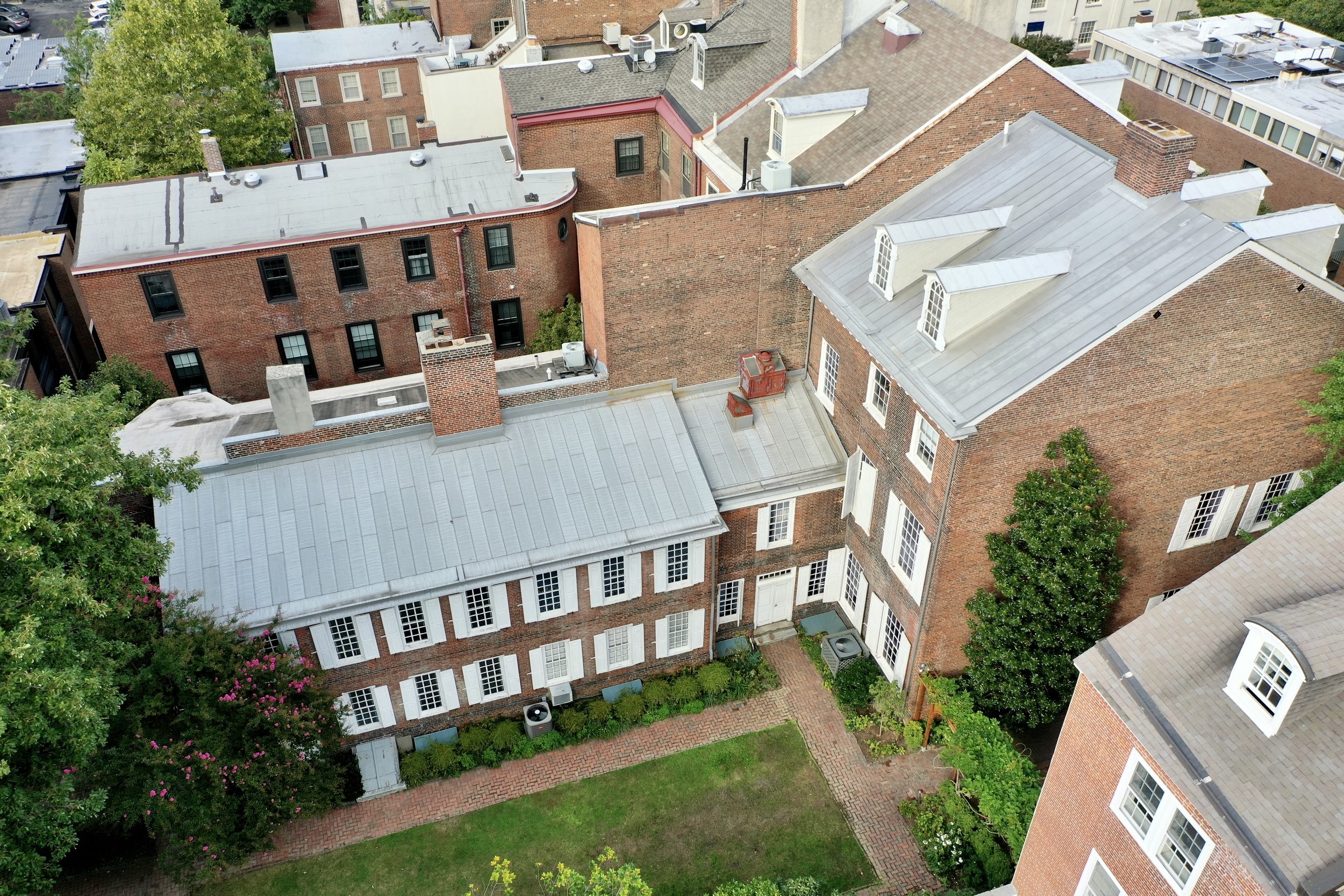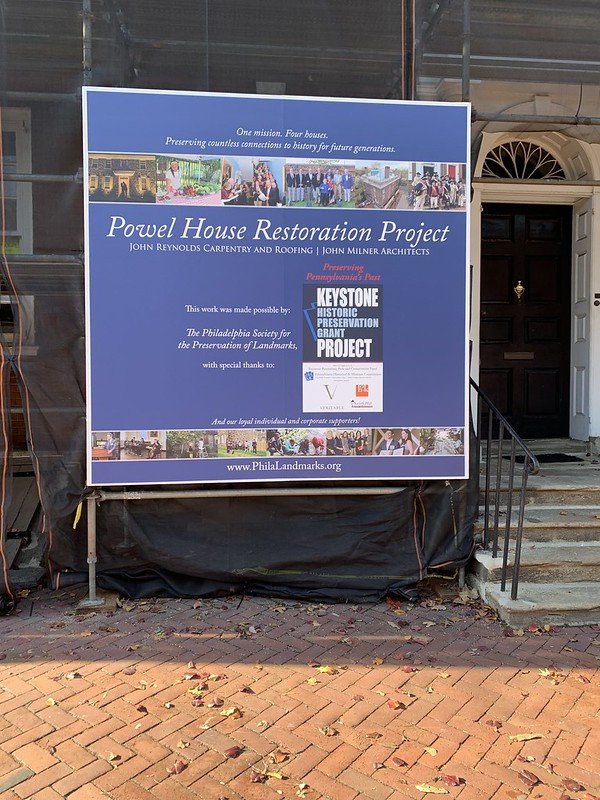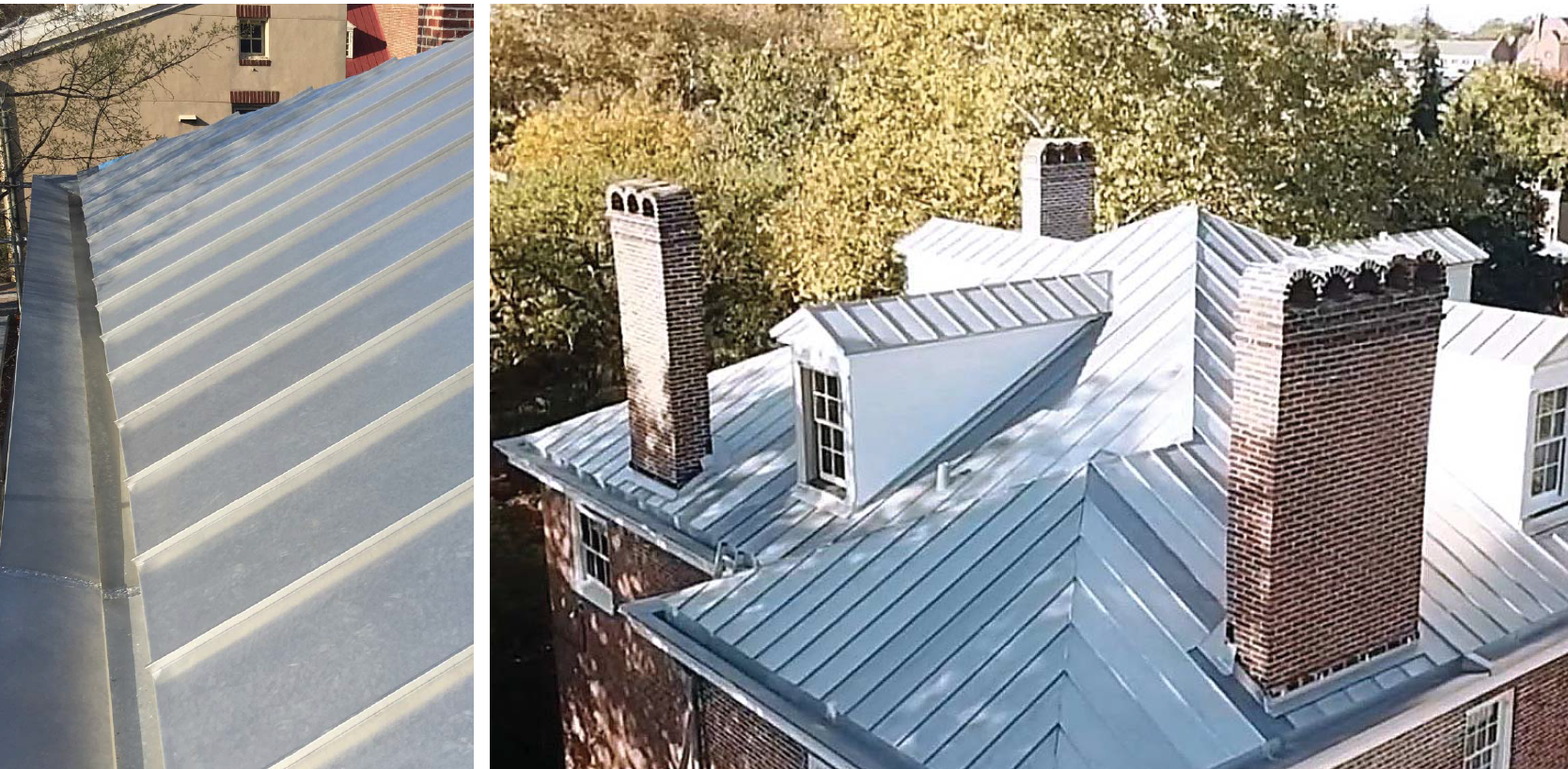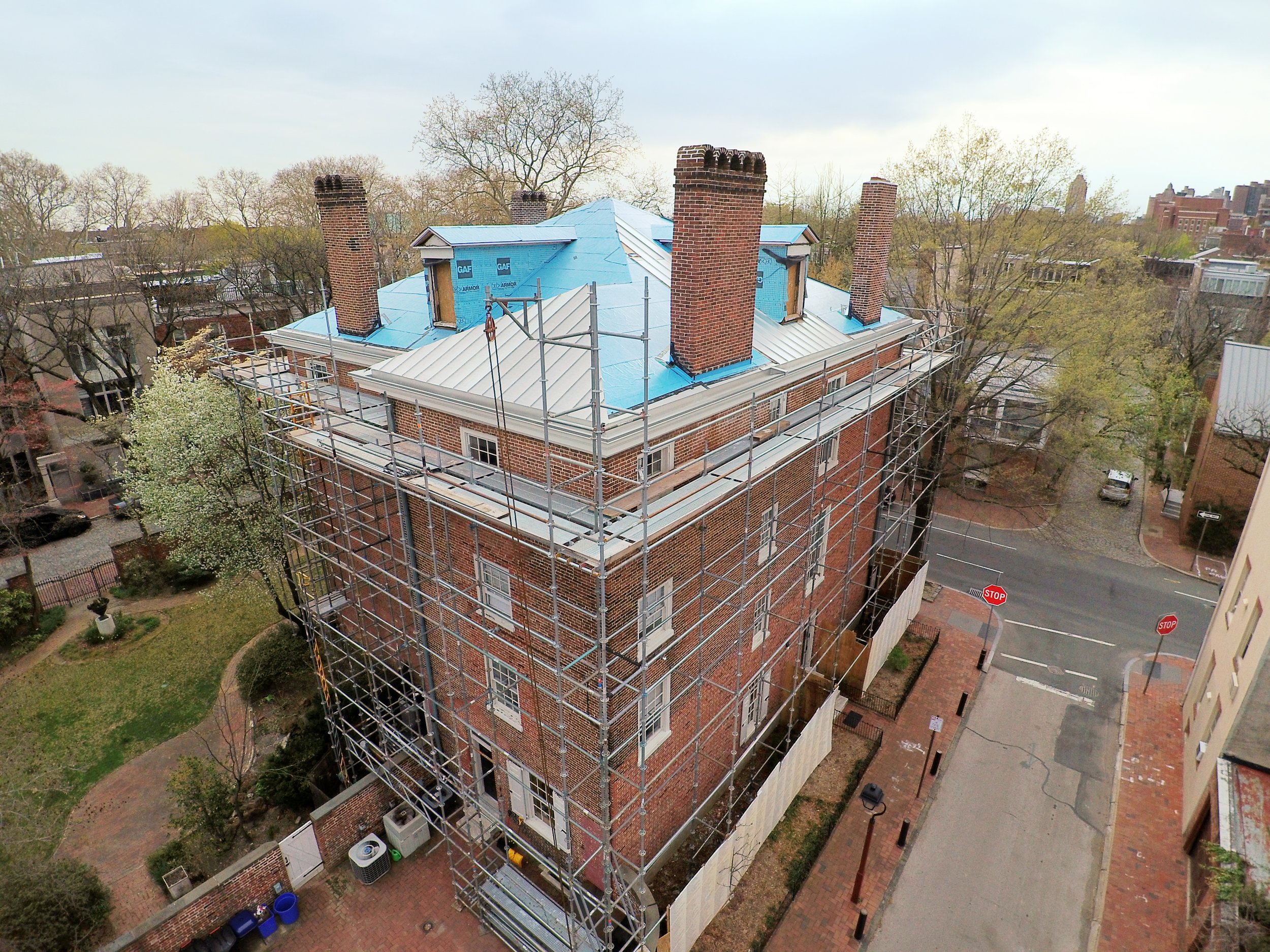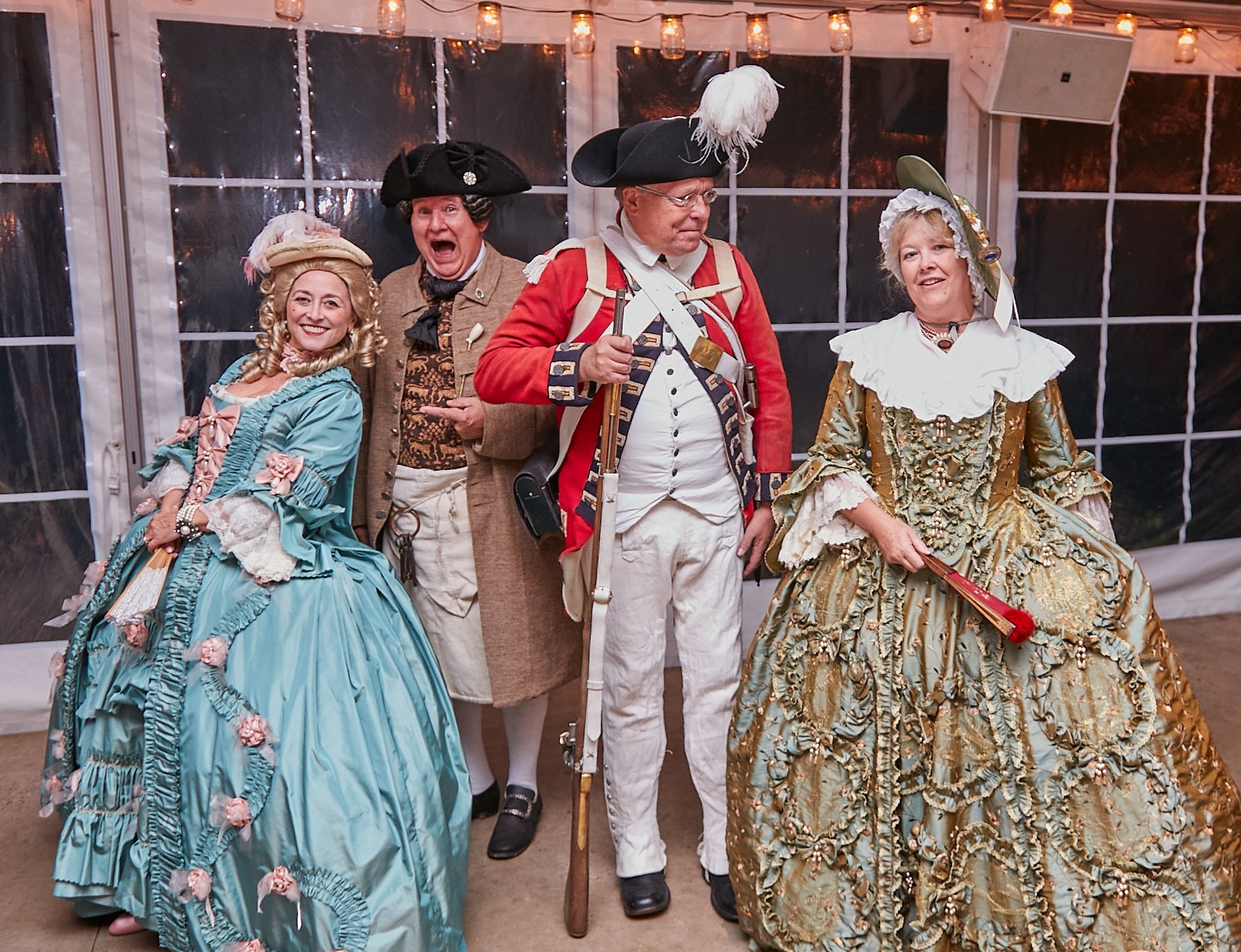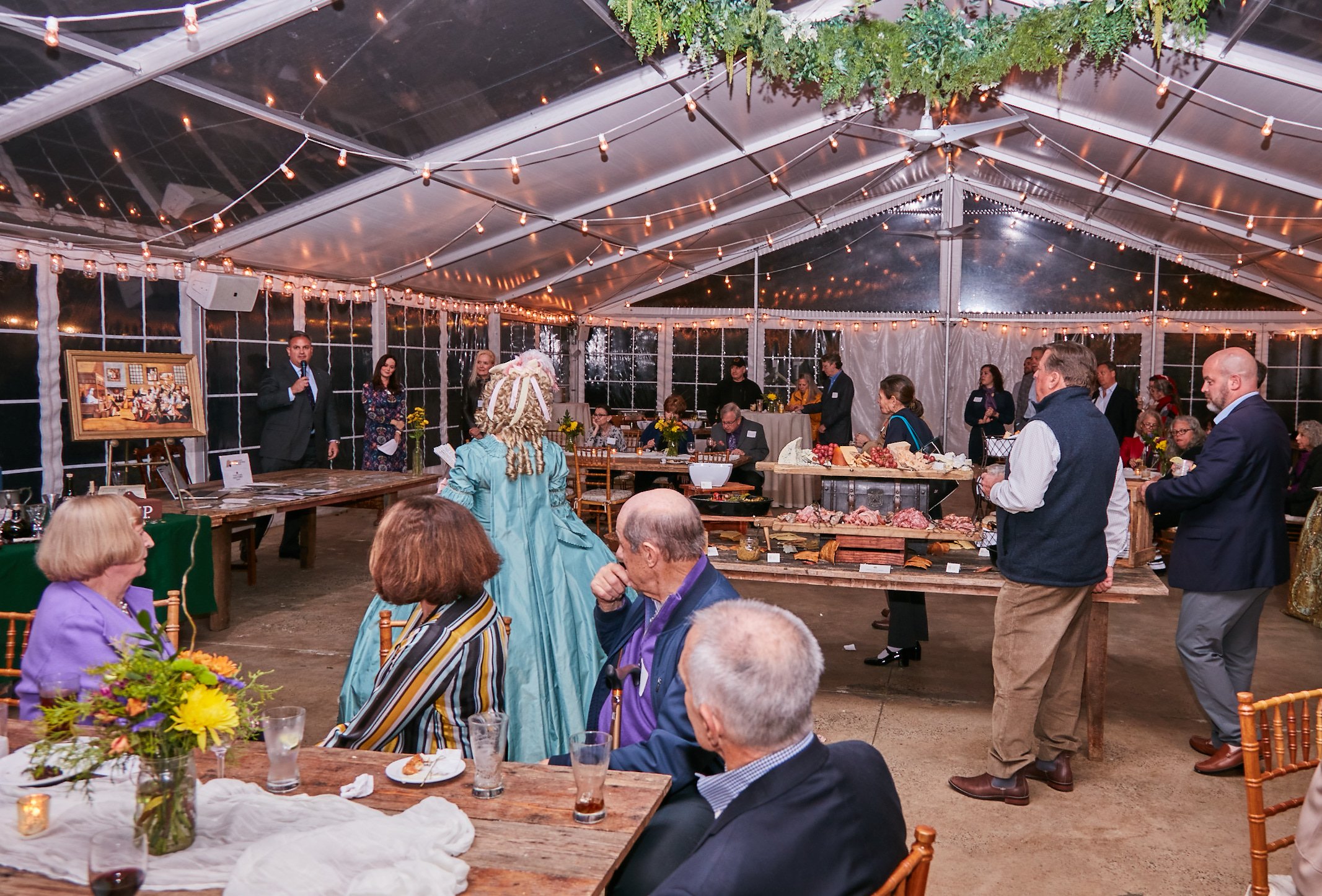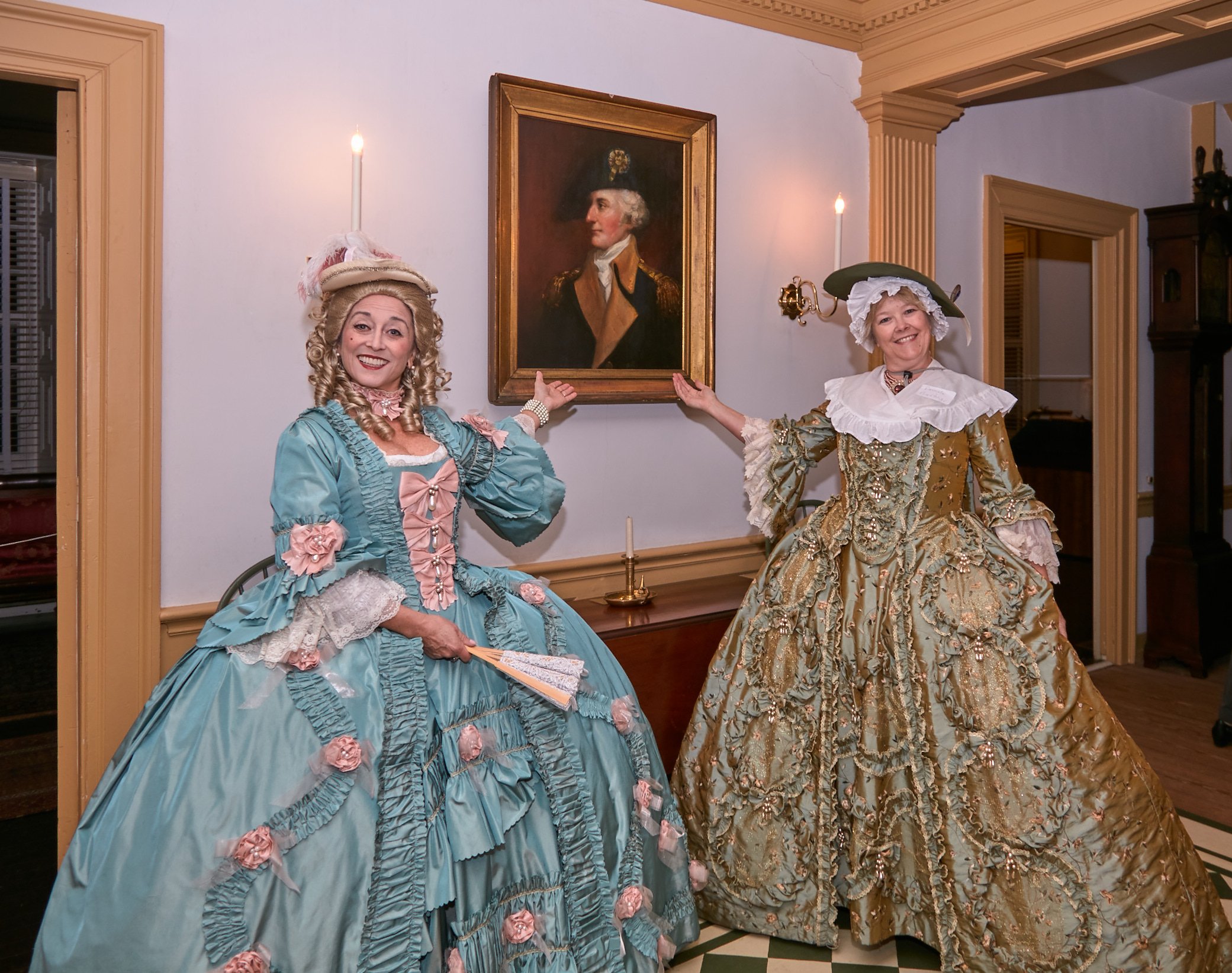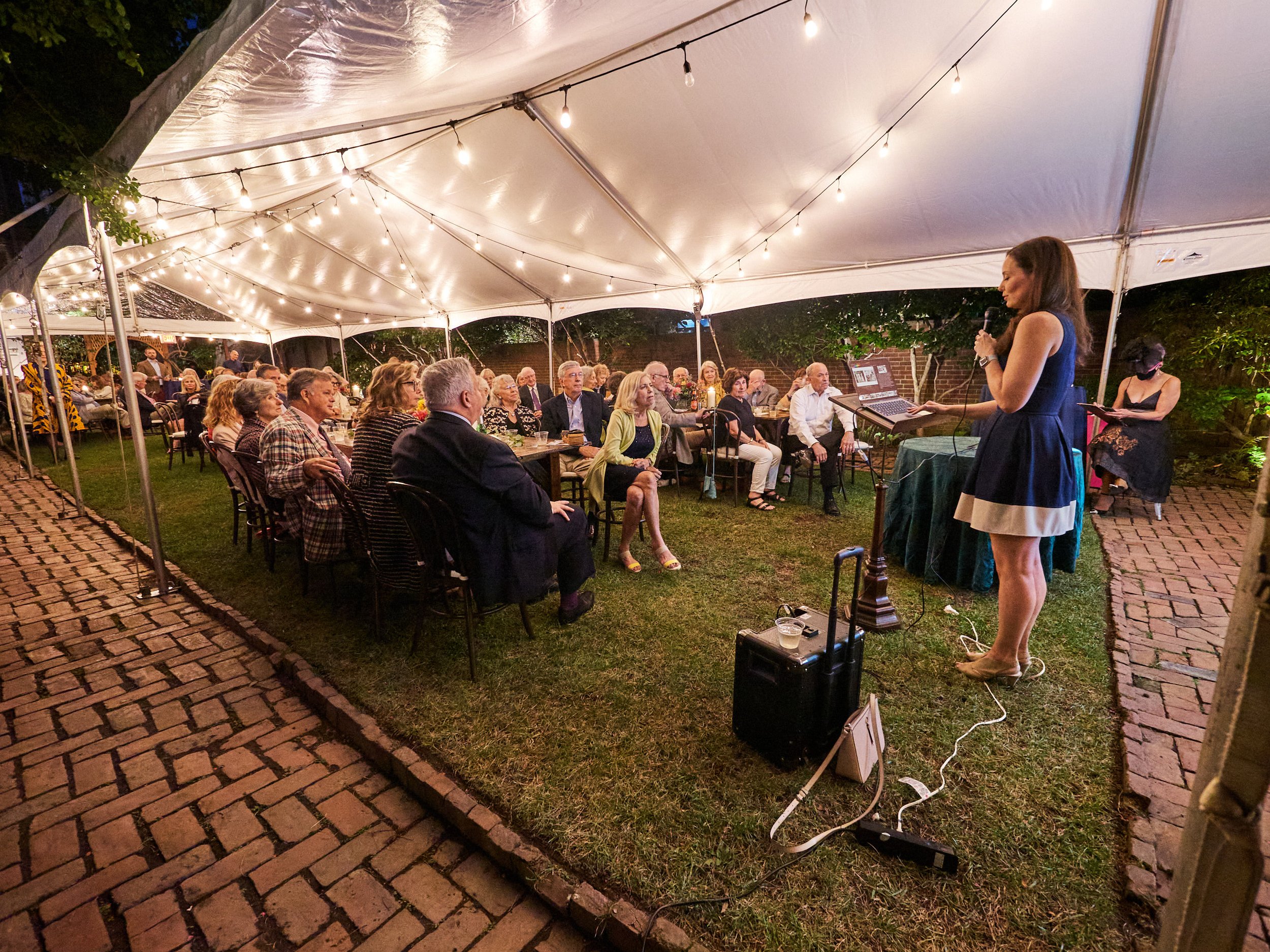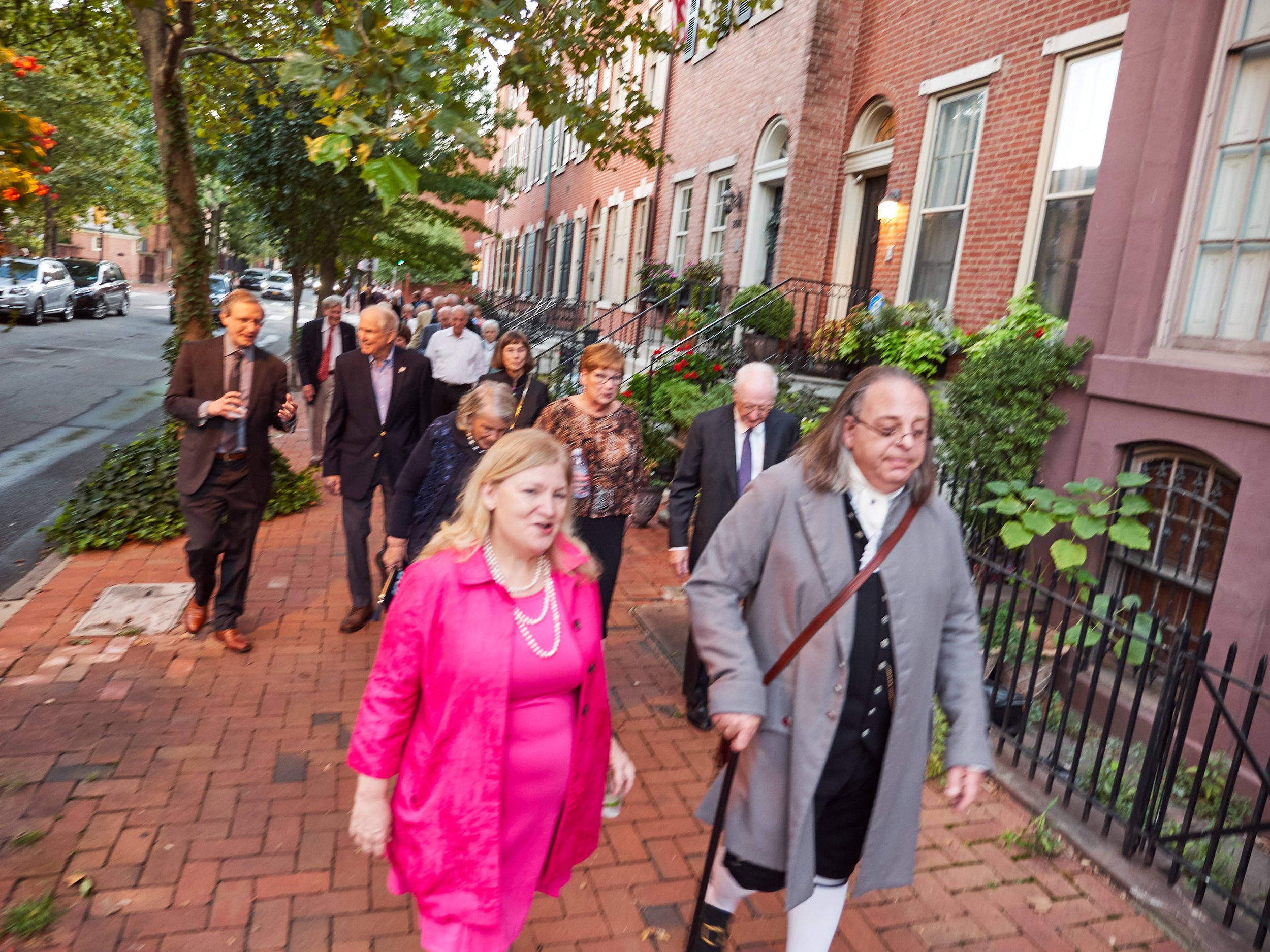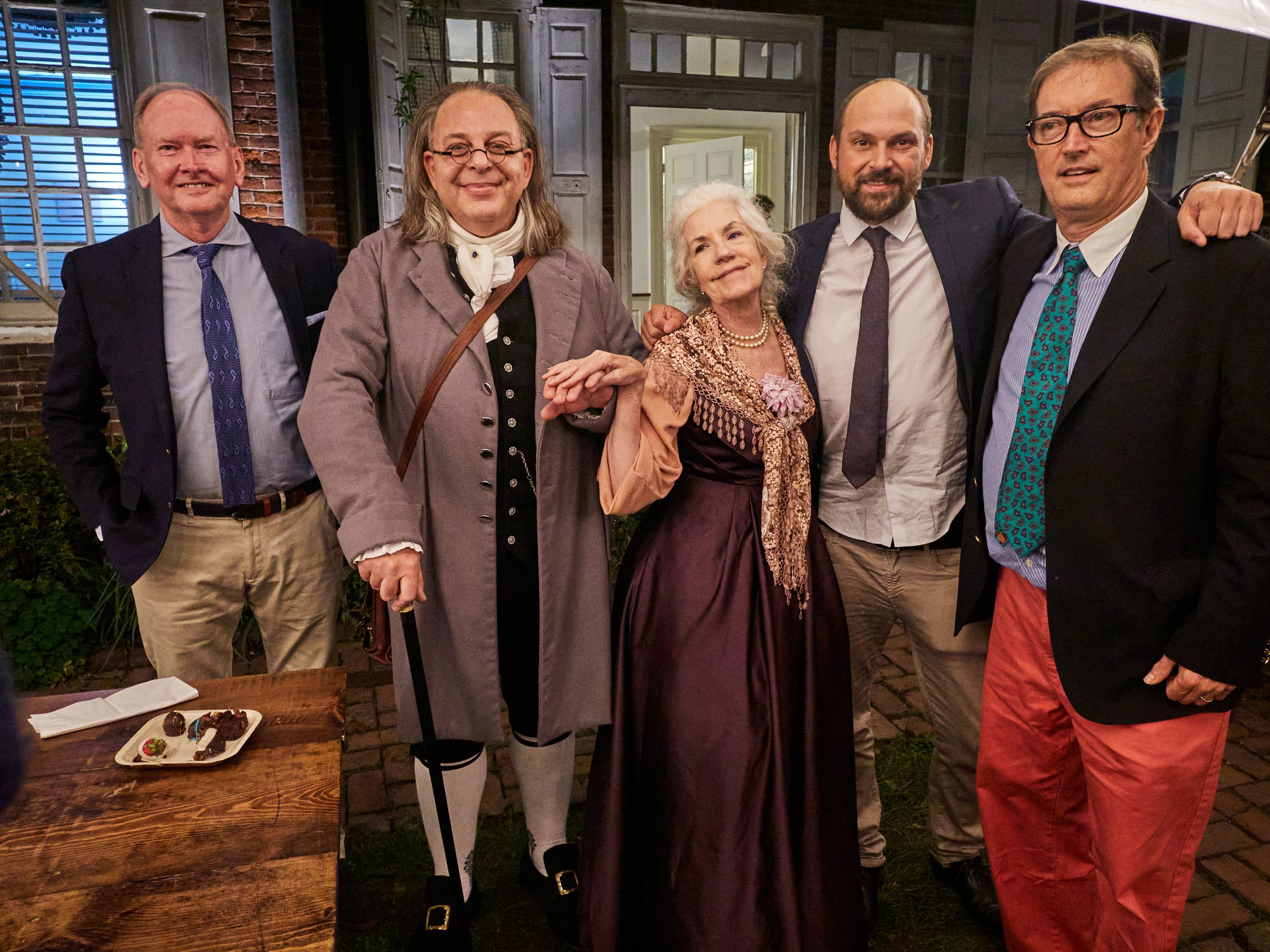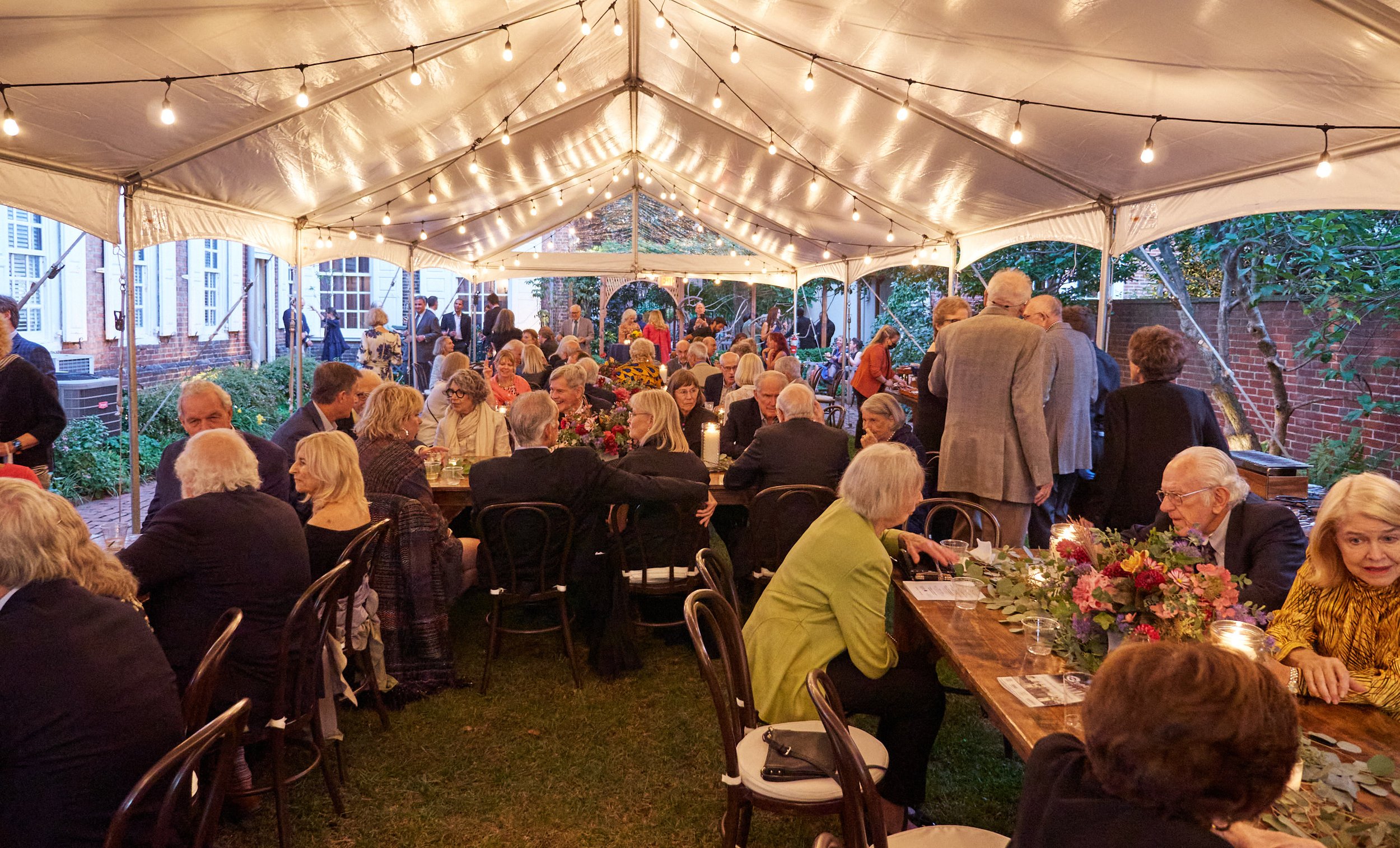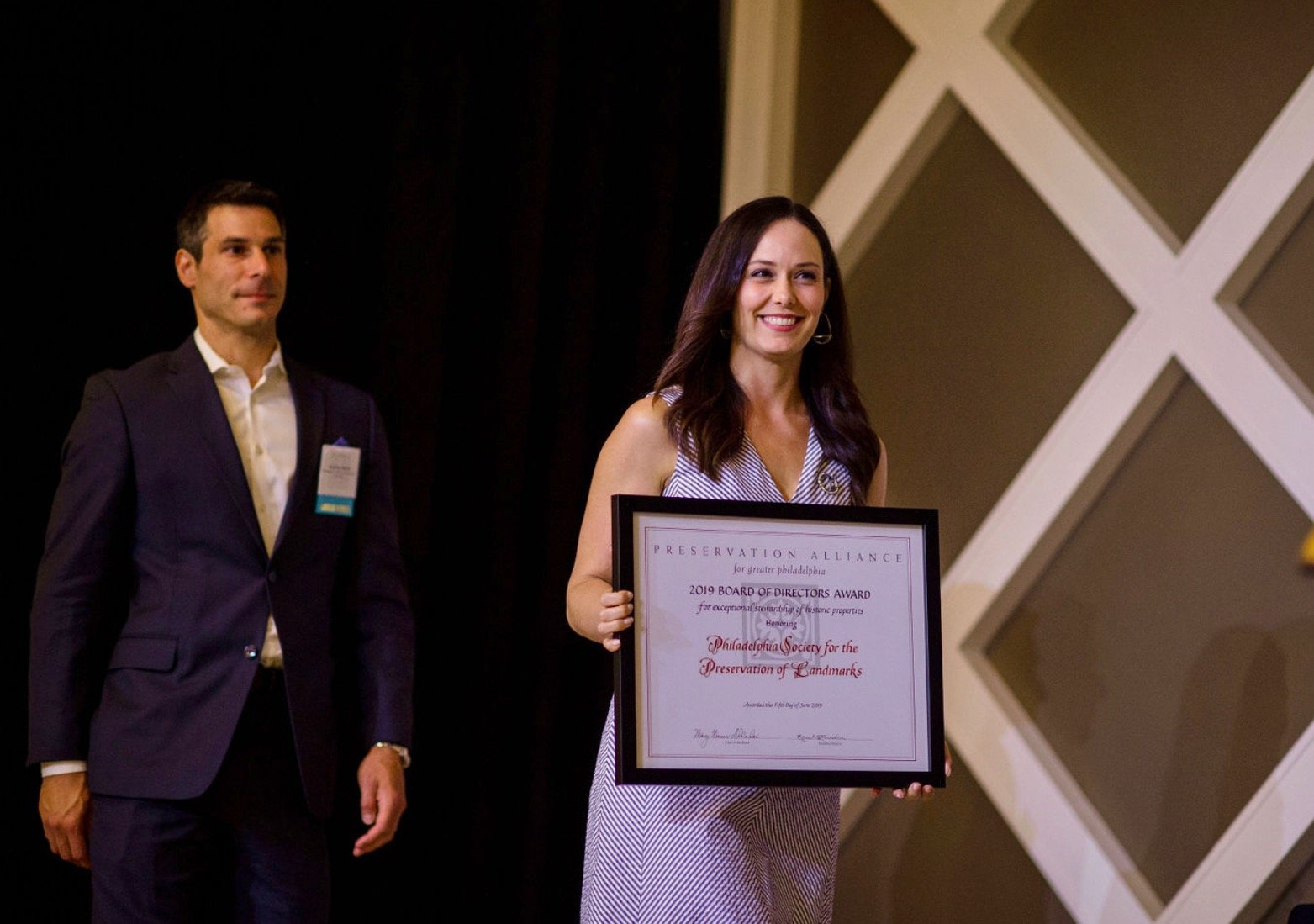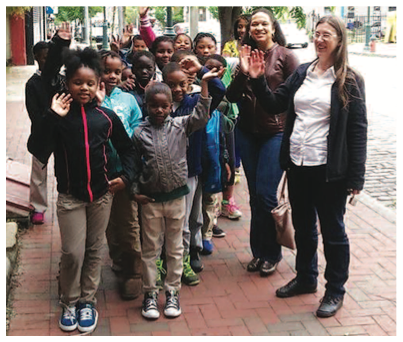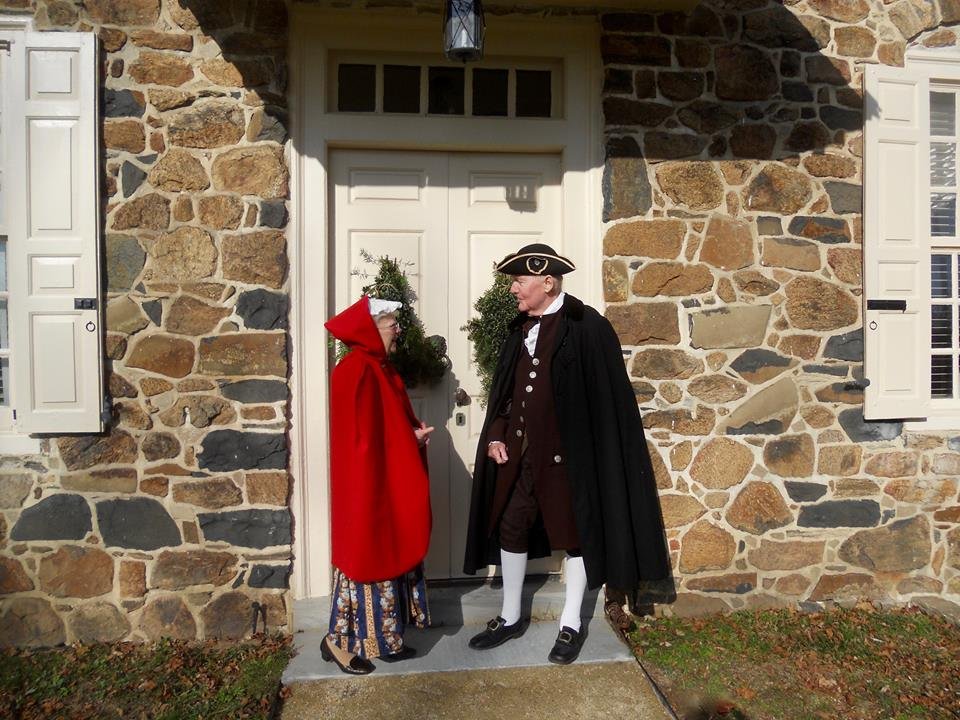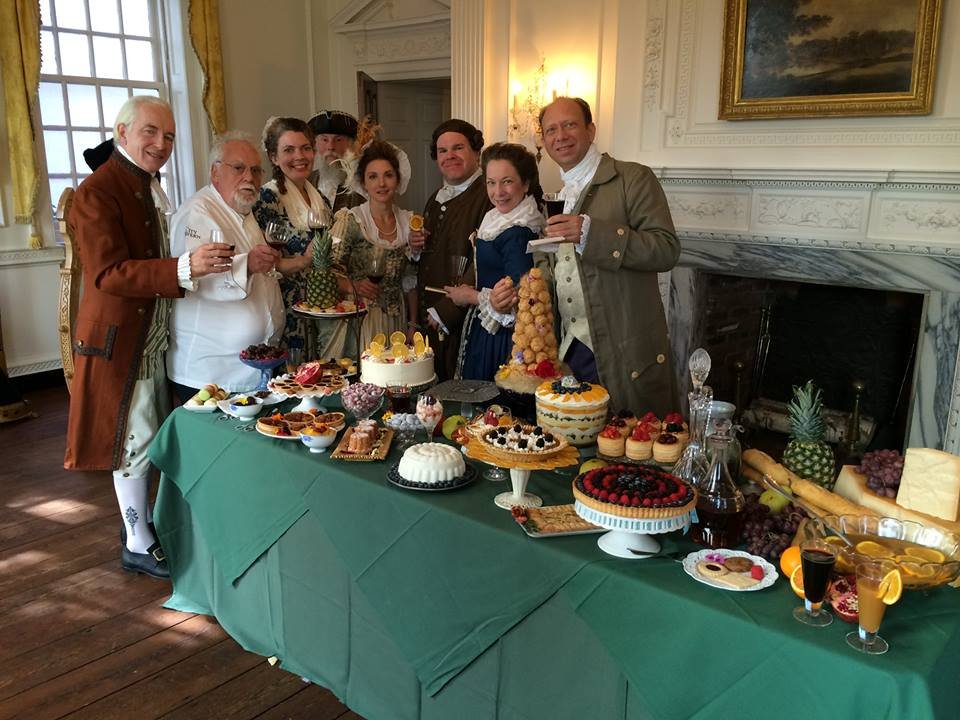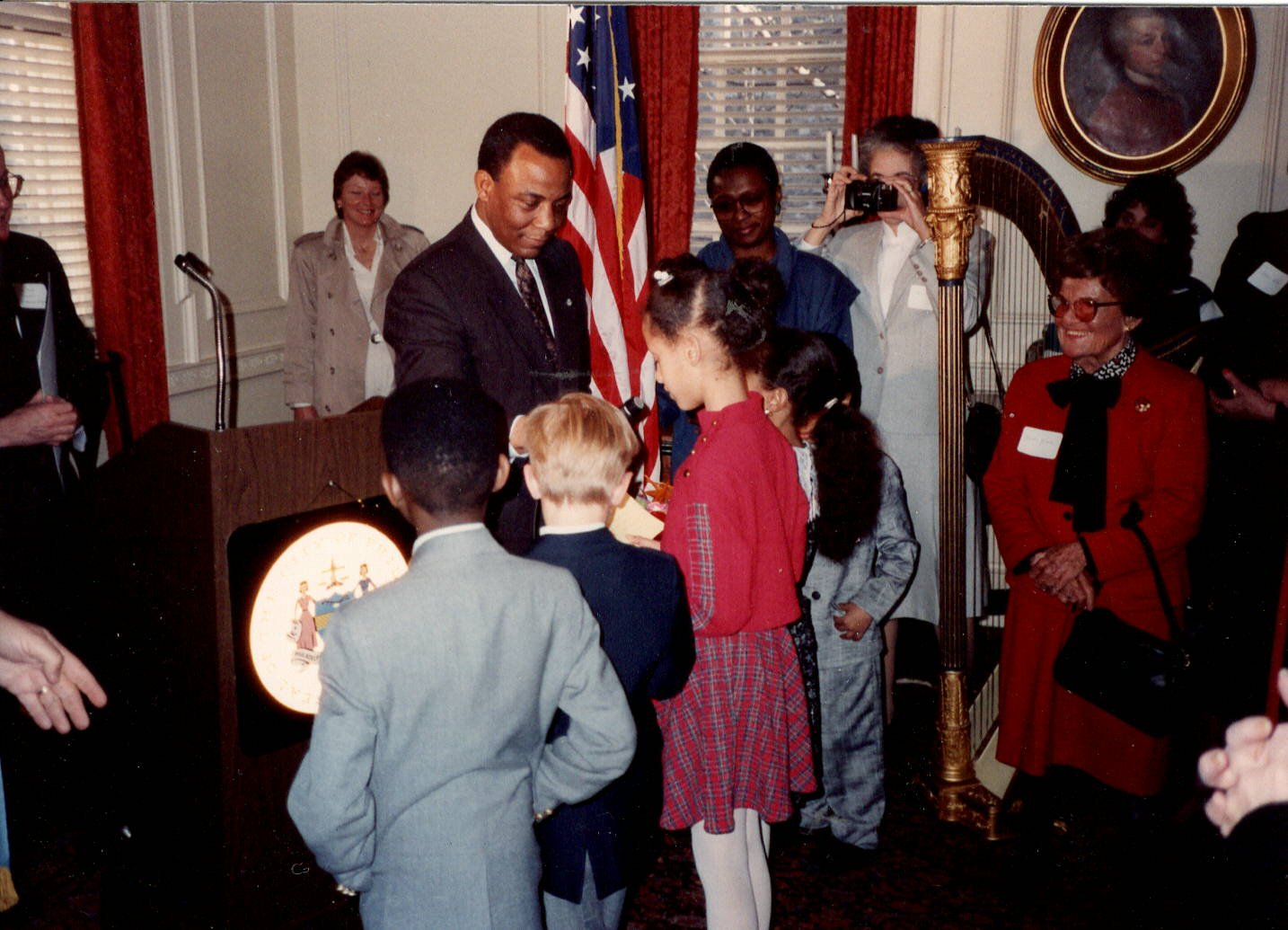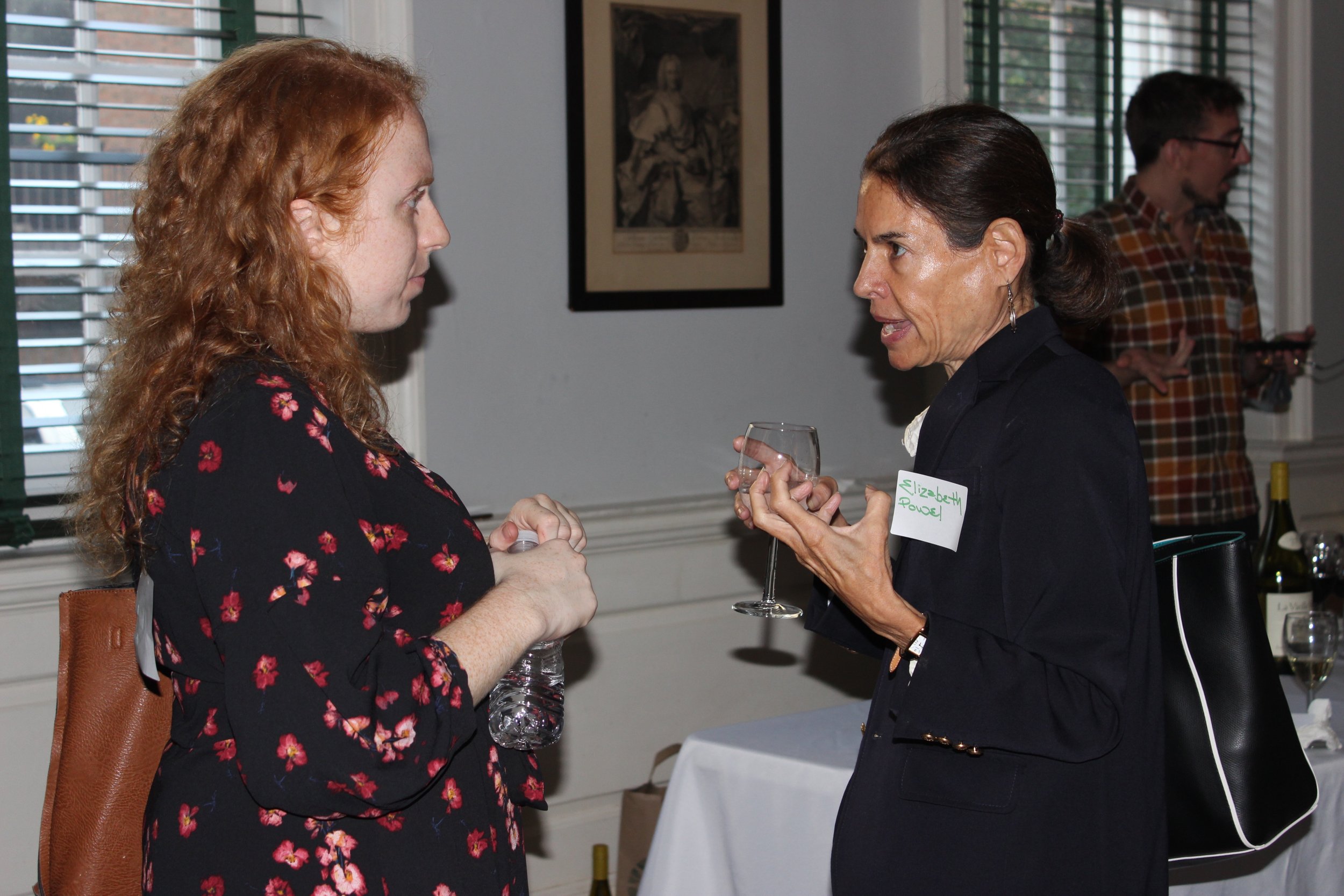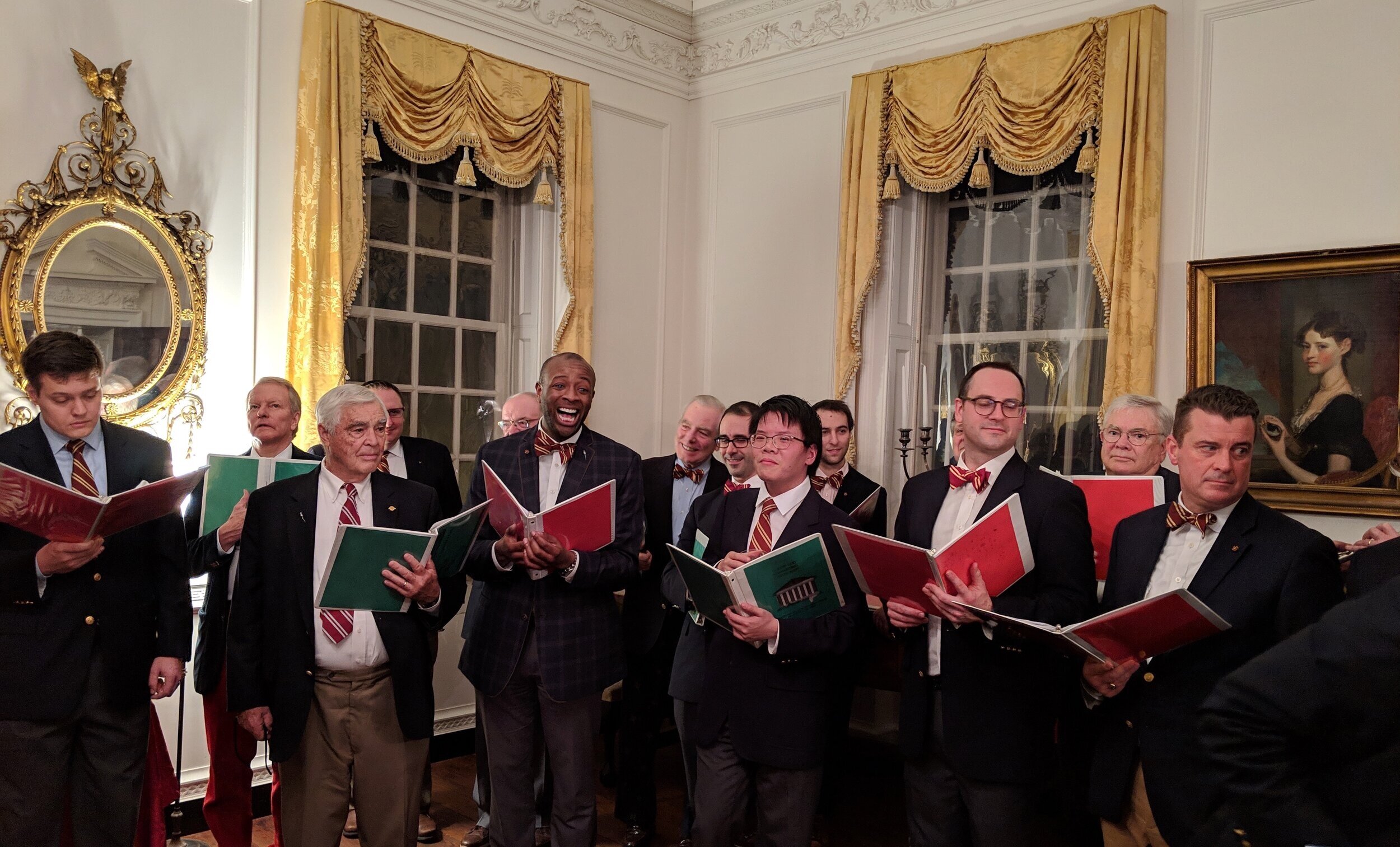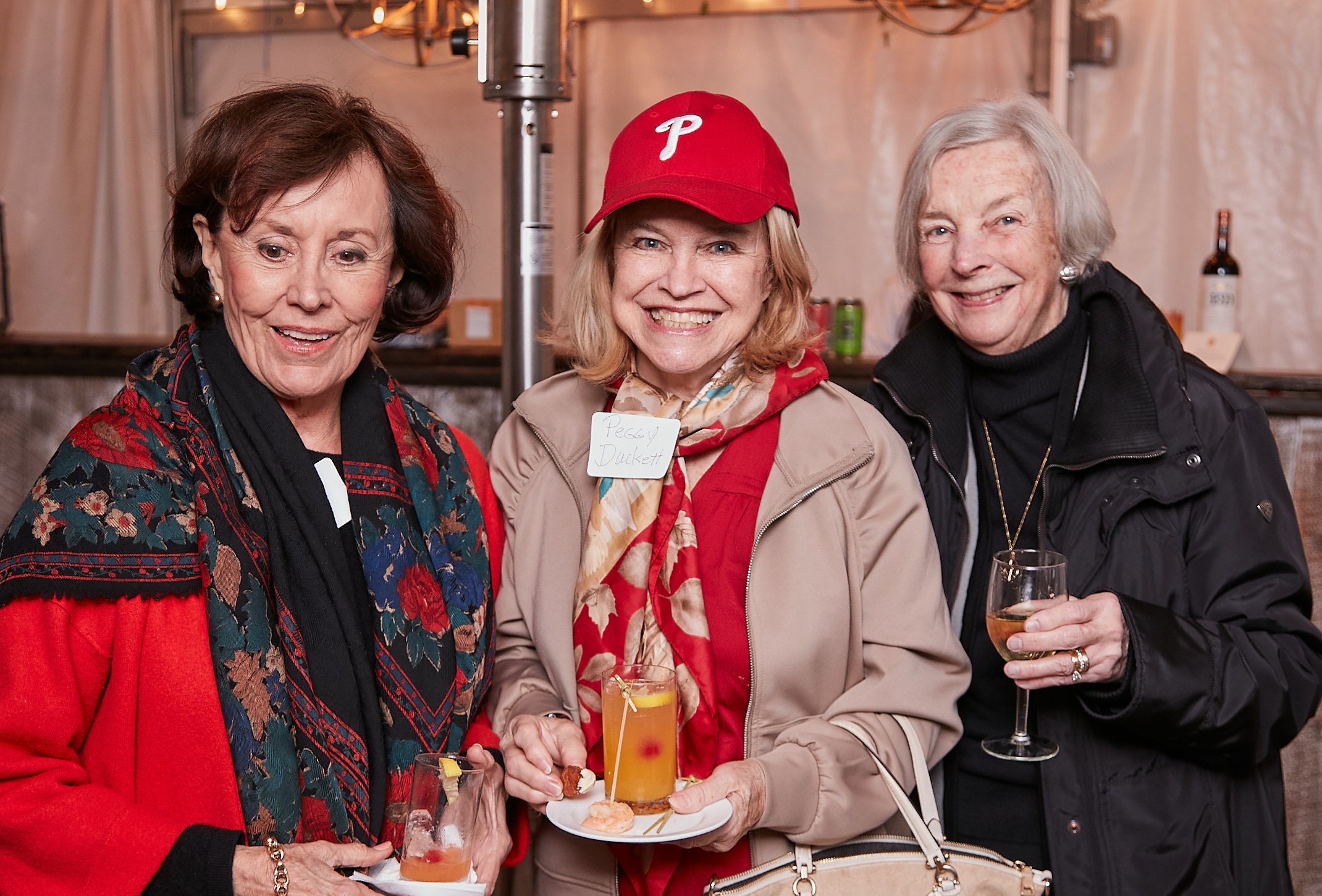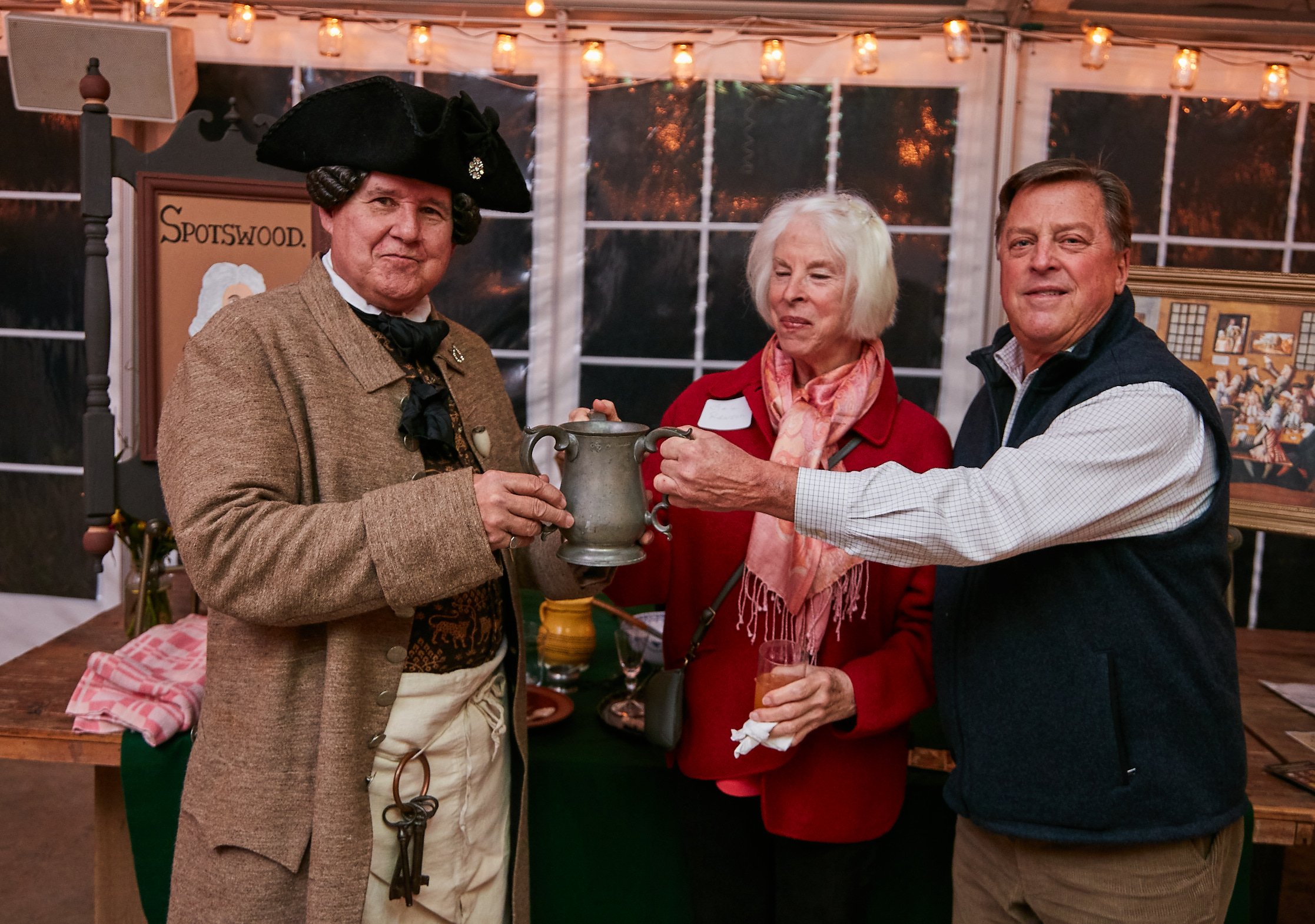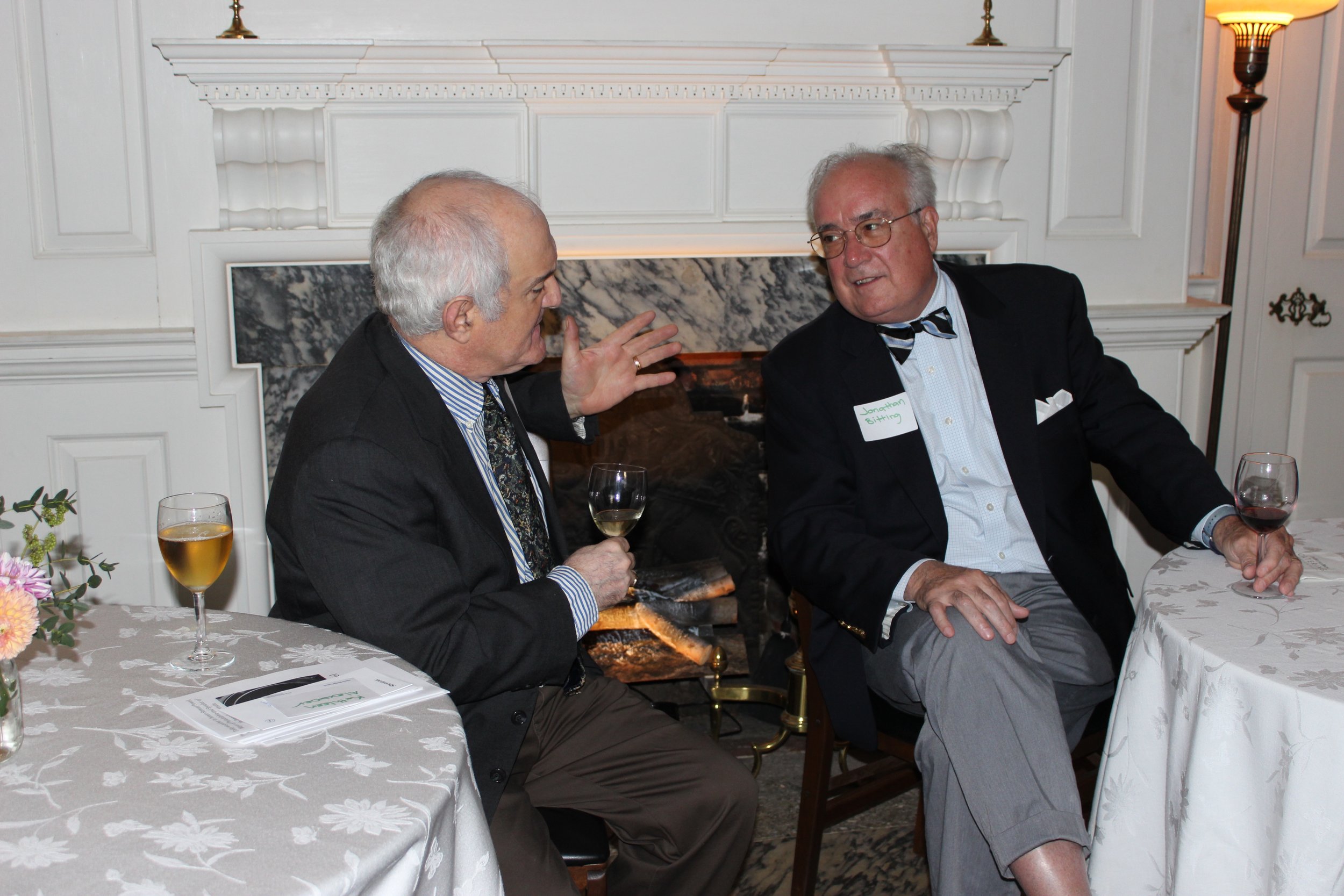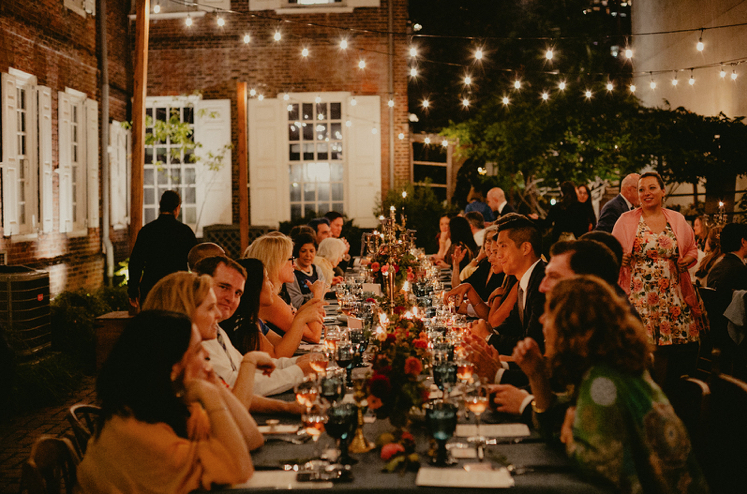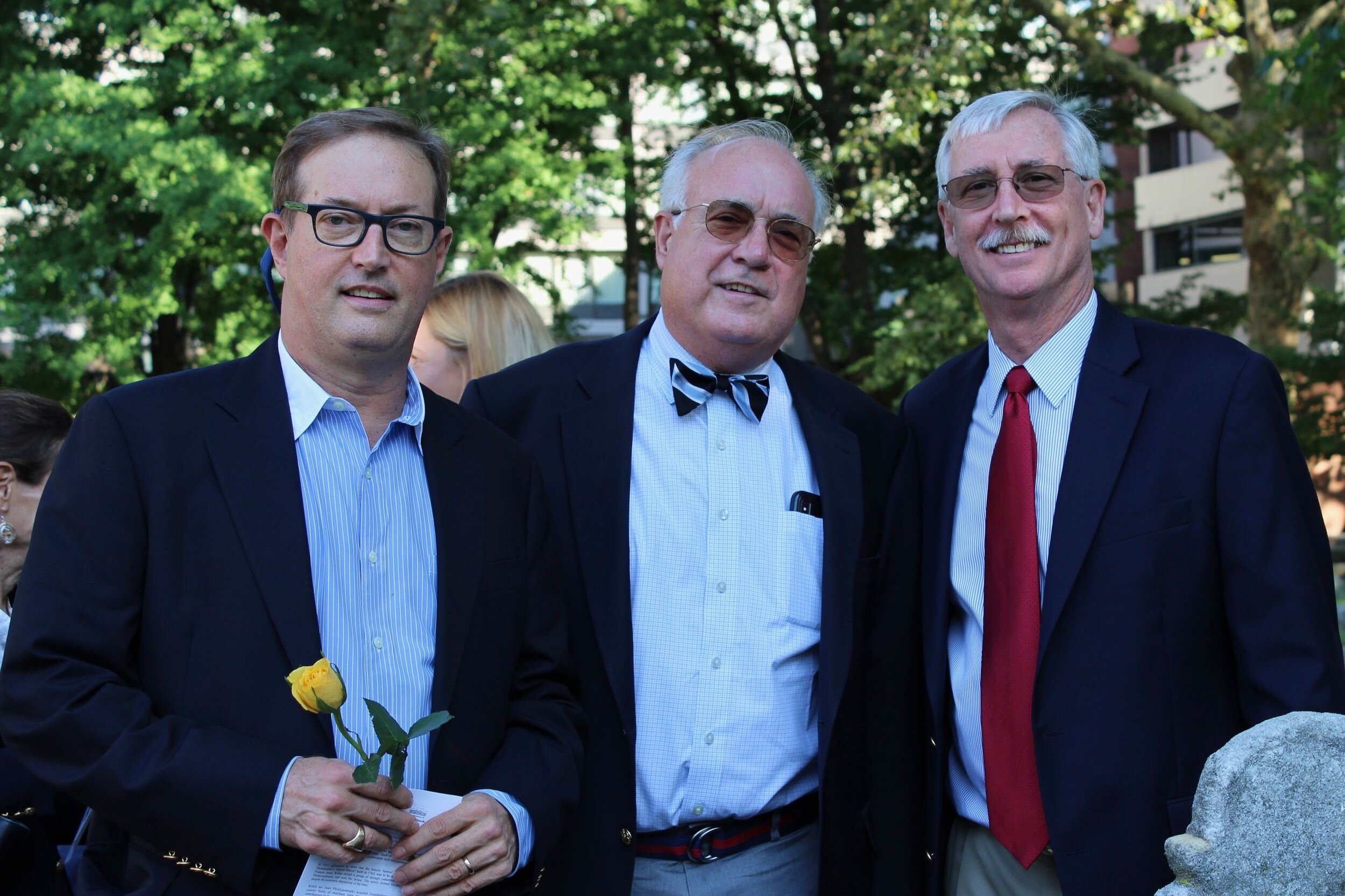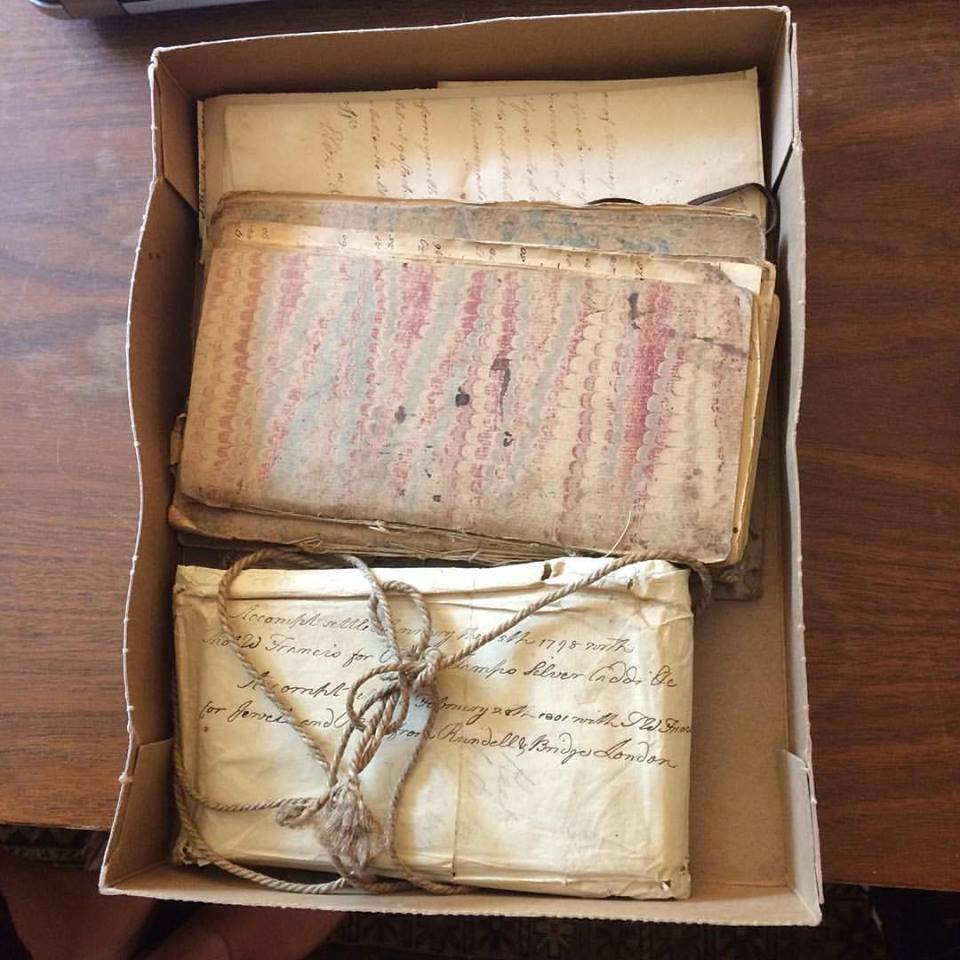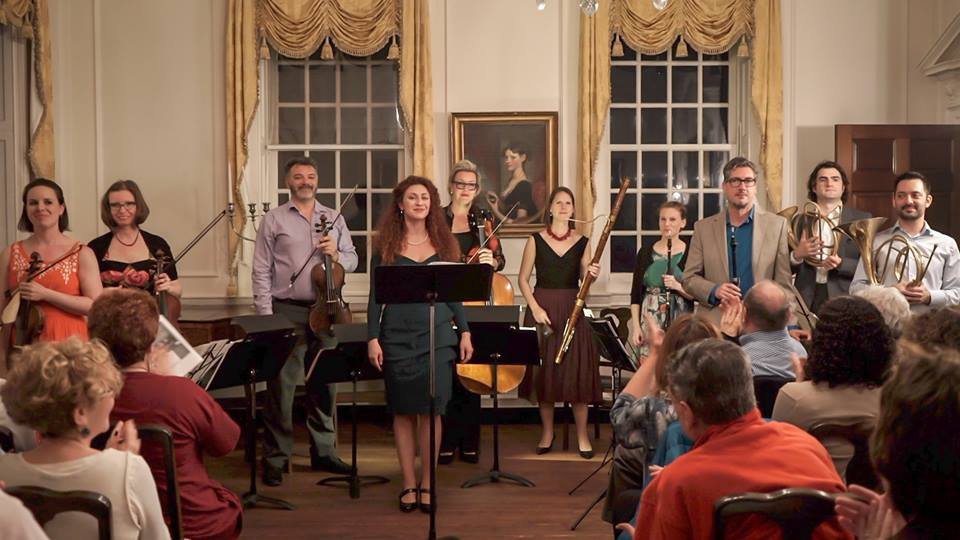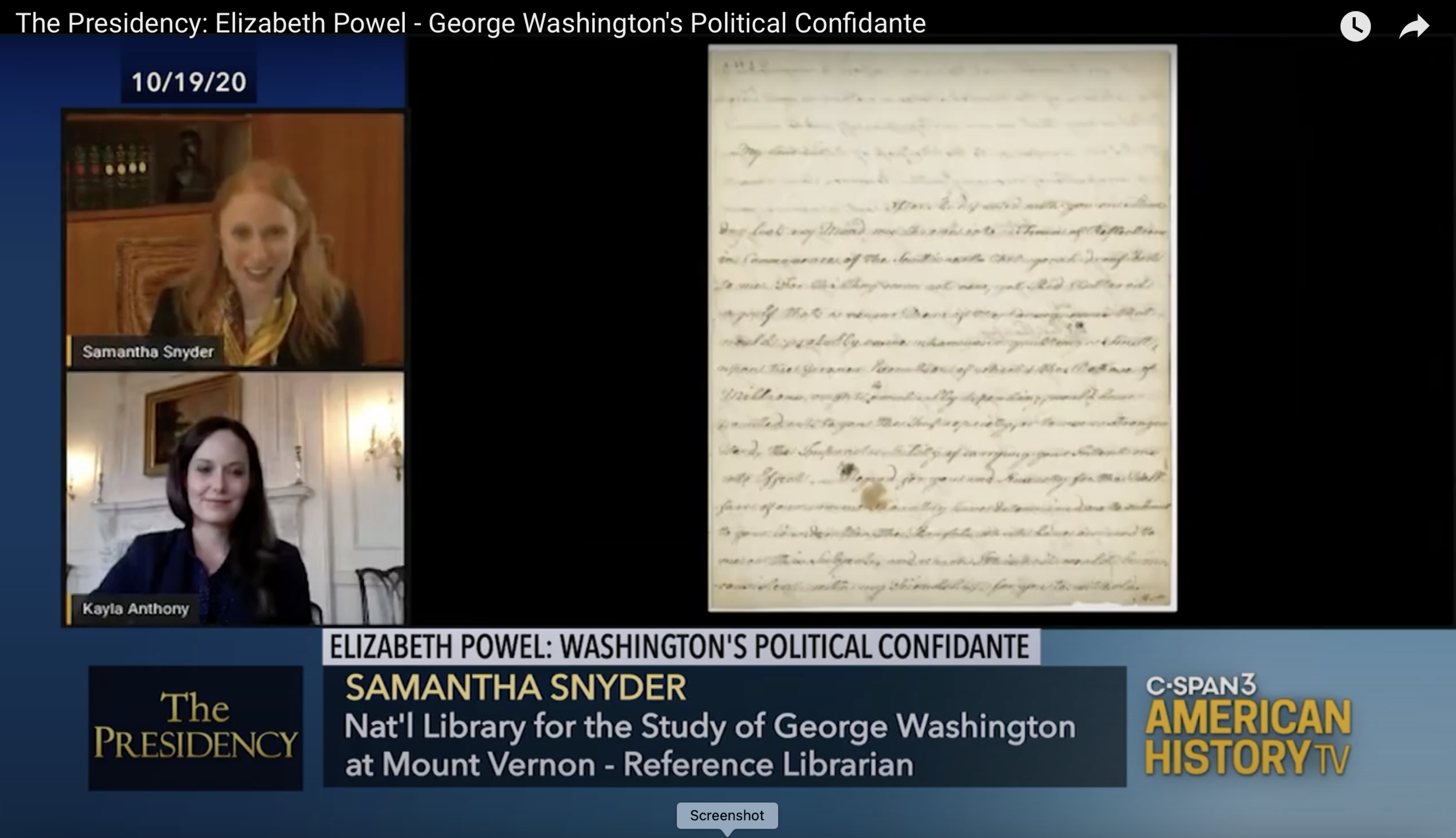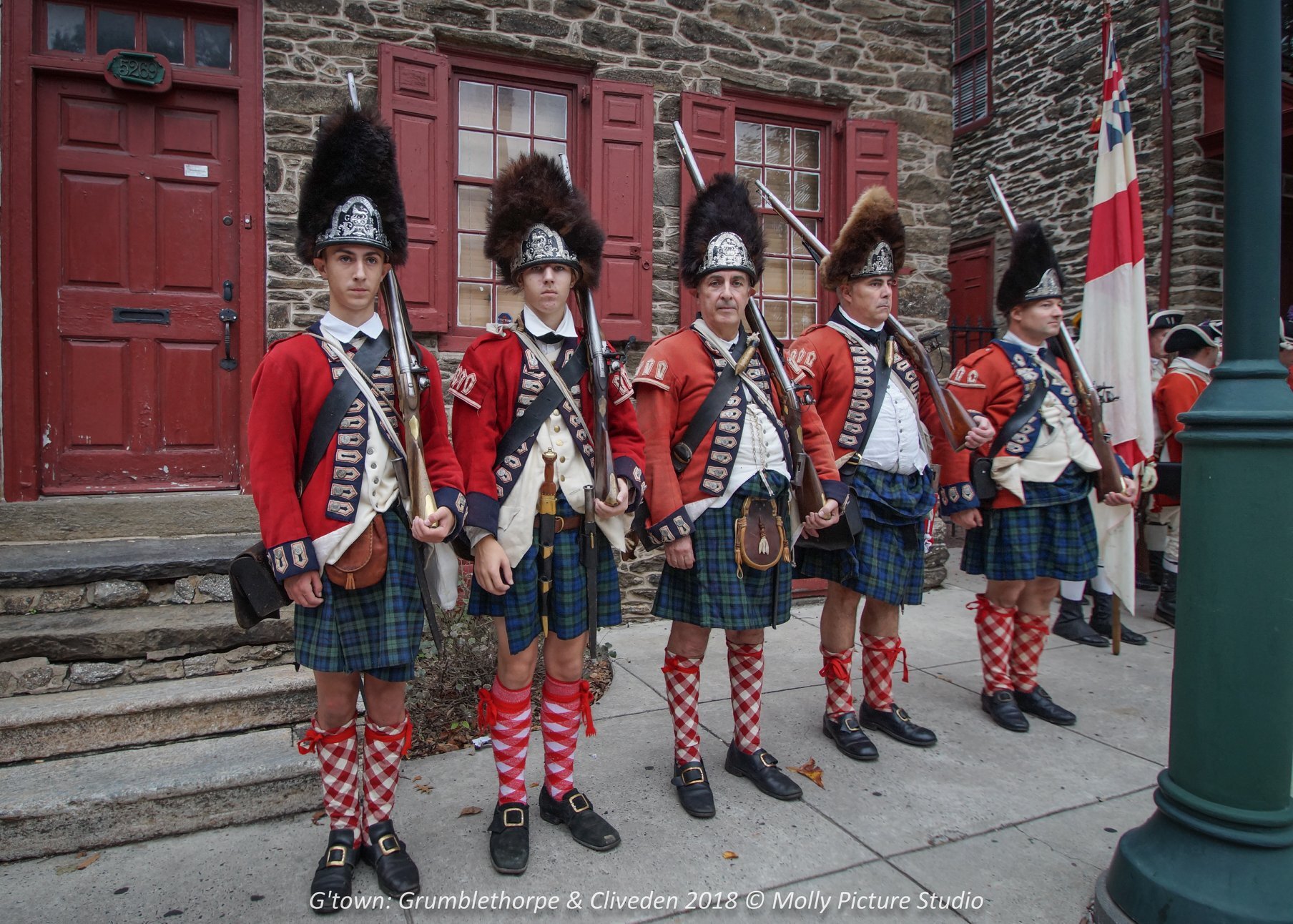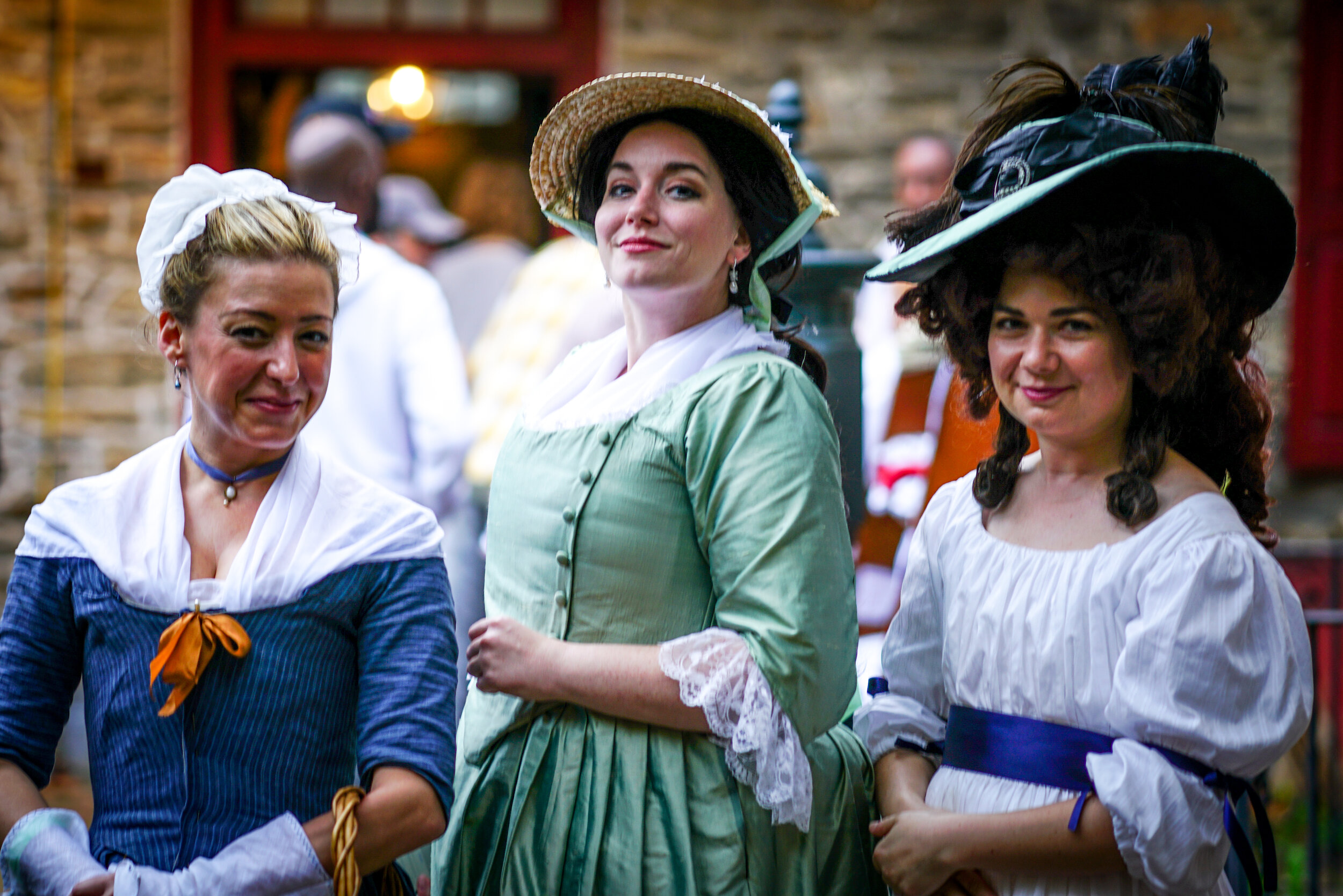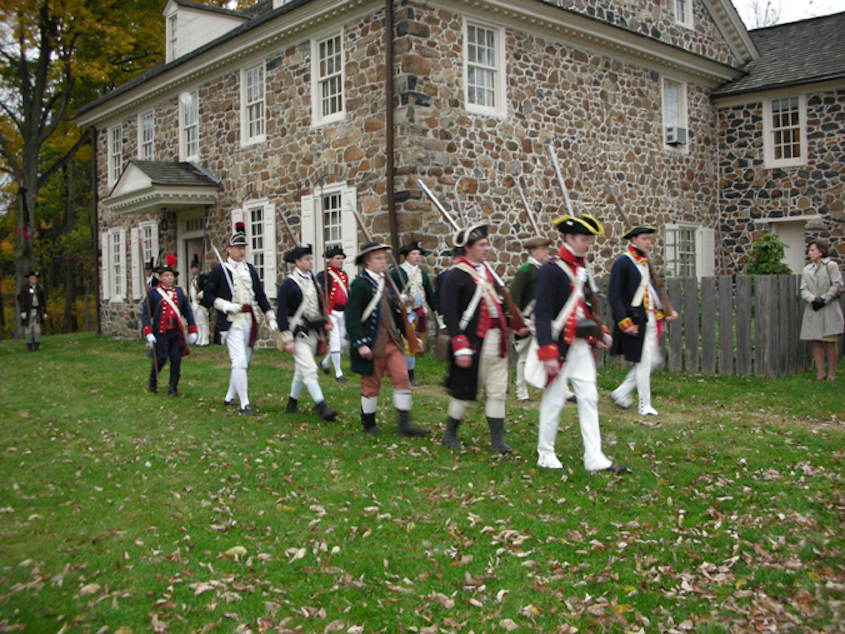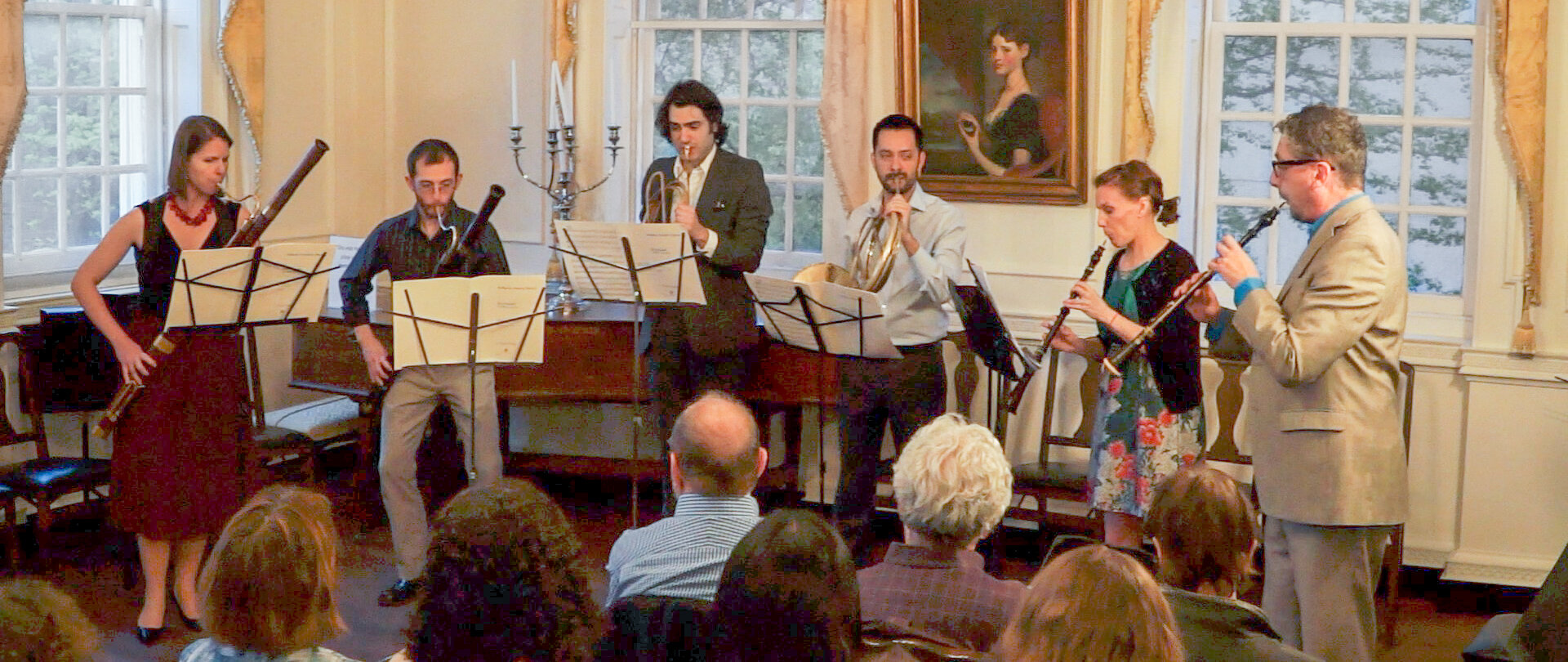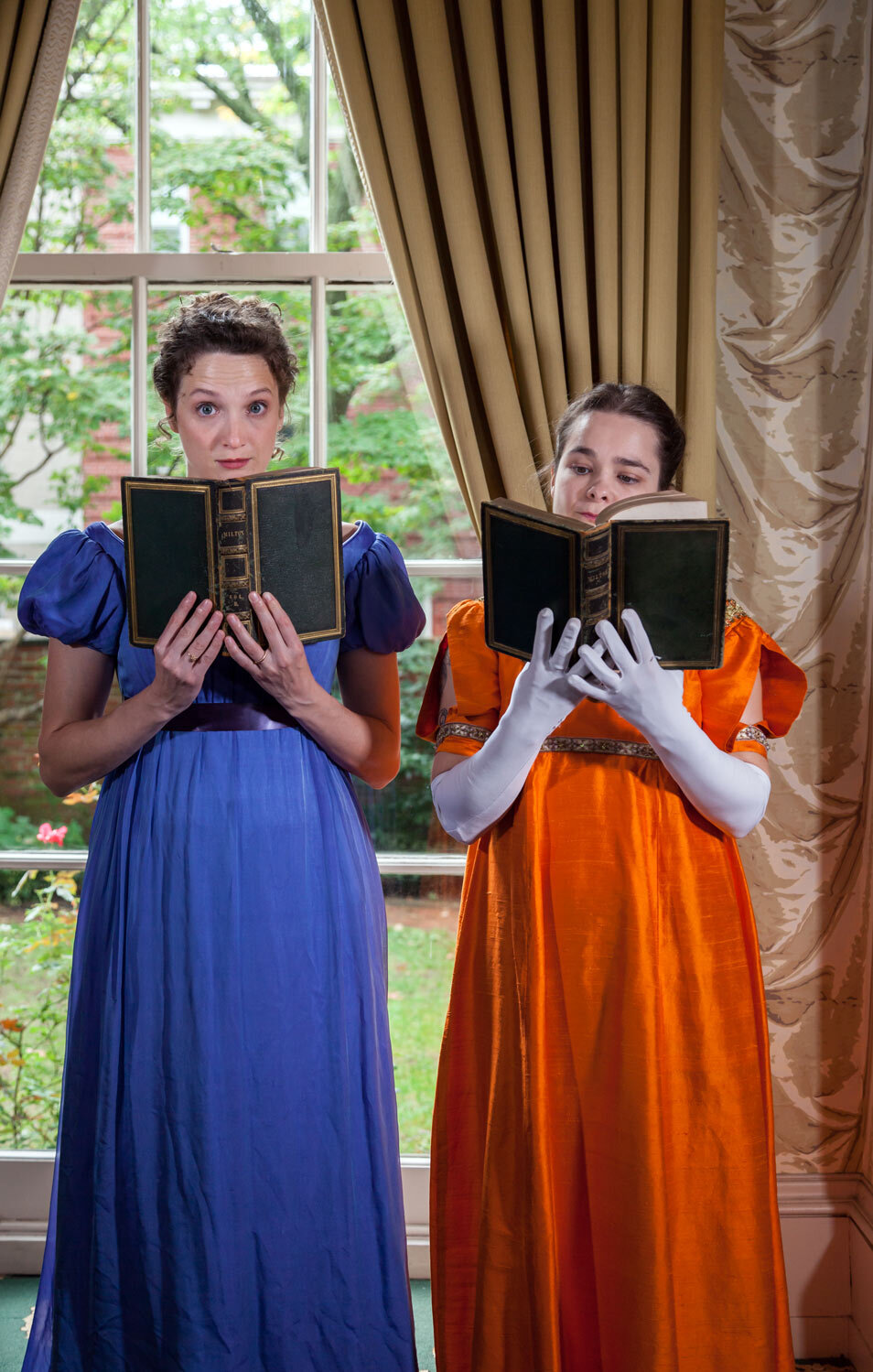
OUR HISTORY
Frances Anne Wister Takes Charge
The story of our founding began at a moment of peril and came about because of the extraordinary efforts of our founder, philanthropist Frances Anne Wister.
The Wister family had deep roots in America’s history, including the historic preservation movement that had begun in the 1890s, when women’s patriotic organizations took the lead in saving historic sites.
In 1929, during a meeting about the reconstruction of Philadelphia’s Old City, Frances Anne championed the idea that any restoration plan needed to be based on facts. A detailed architectural survey documenting all the important historic buildings needed to be conducted at once.
Soon after the American Institute of Architects completed this Survey of Old Philadelphia, Frances’s friend, architect H.L. Duhring, alerted her that the historic Samuel Powel House was at great risk.
The current owner Wolf Klebansky was looking to sell this exceptional historic Georgian house to make way for a parking lot, despite the fact that the house had played such a critical role in America’s founding. Samuel and Elizabeth Powel had lavishly entertained many of our founding figures at this historic house, including George and Martha Washington, Ben Franklin, John Adams, Benjamin Rush, Thomas Jefferson and the Marquis de Lafayette.
What’s more, the owner’s agent was already inviting people to tour the property before proceeding with the house’s demolition. So Duhring and Wister set off to tour the house themselves.
What they found was devastating: the house was in complete disrepair. The owner had been using it for storage for his horsehair and brush manufacturing business. Tragically, most of the woodwork was gone, the plaster cracked and falling, and the rear of the house was open to the elements. Alarmed, Frances Anne took action.
"“You will see from this survey that places of interest and importance are to be found in every section of Philadelphia…How many years will it take to educate the public to preserve landmarks? People endow art galleries, collect pictures, take some interest in orchestras, but little in old buildings."
— Frances Anne Wister
“The plight of the Powel mansion, far from deterring us, aroused a determination to save it...with its rooms of noble proportions, and the last house in the "Old City" where Washington was a frequent guest. It would have been a crime to destroy this historic mansion where the feet of so many patriots trod; a place which was the center for all the important people of the time ..."
— Frances Anne Wister

1930. Supporter of the Powel House renovation, Sophie Cadwalader.

Powel House in 18th century colonial times as depicted in the 1799 William Birch print "View of Third Street from Spruce".
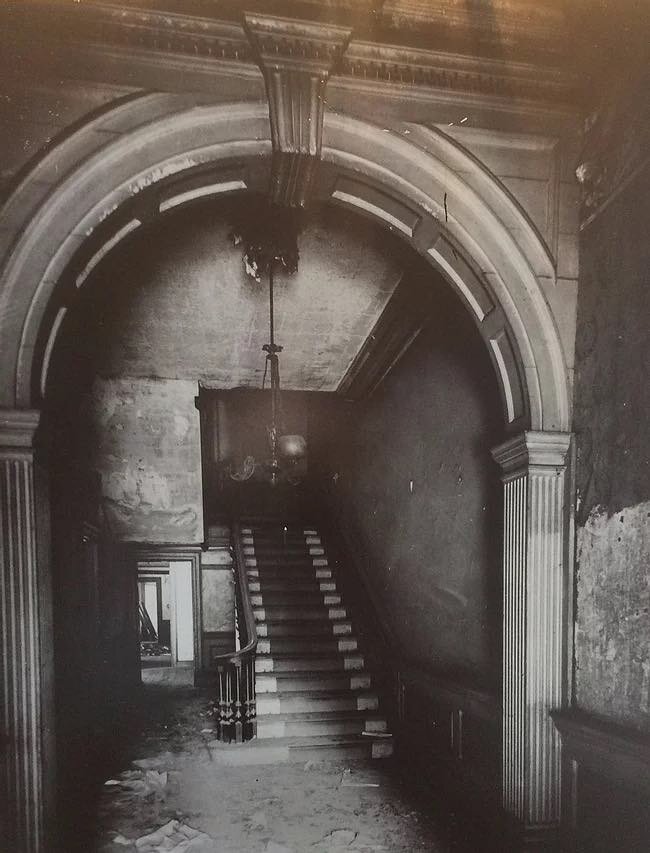
Powel House in 1930, in complete disrepair just before it was going to be demolished.

The state of interior damage at Powel House just prior to Frances Wister taking charge.

Another view of the chaos within the house.

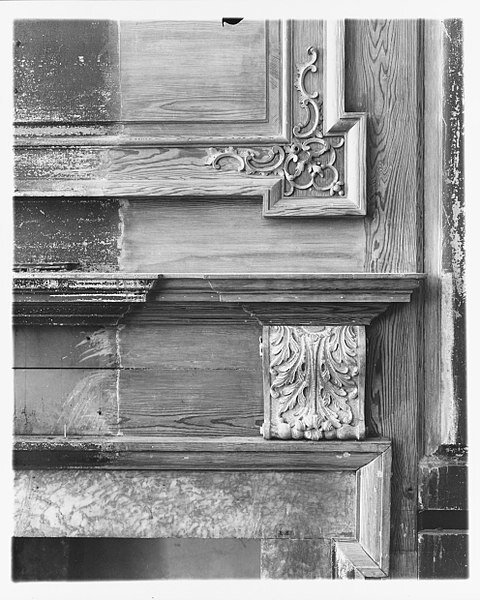

Architect D. H. Durhing. The architect Wister hired to restore the Powel House.
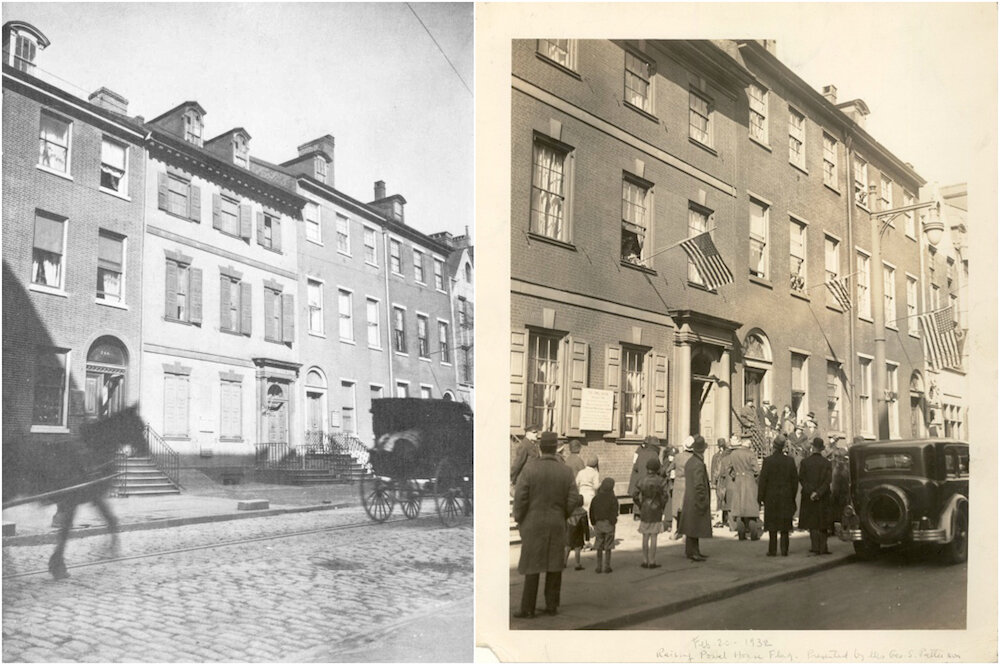
Powel House in 1903. At right: In 1932, PhilaLandmarks members celebrate Flag day at the newly rescued Powel House.

1888. Frances Anne Wister stands behind her grandmother on the porch of Belfield her grandparents home in Germantown.
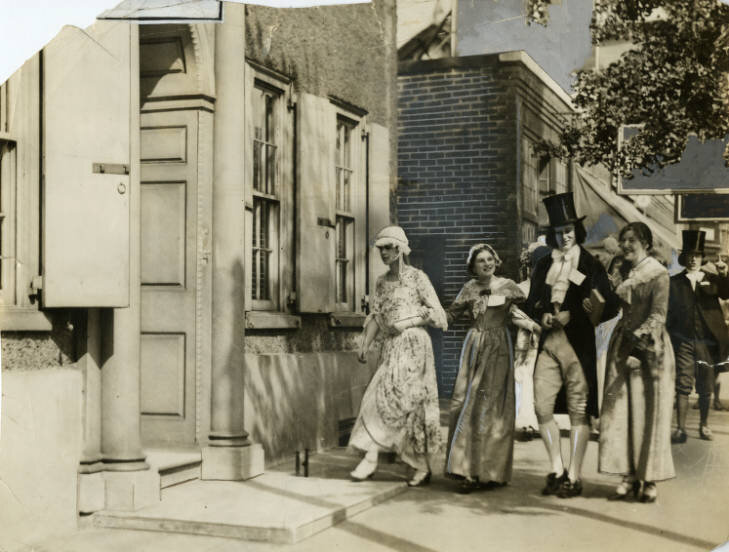
For decades, the Wister Family championed history. Here in 1927 they celebrate "Colonial Days" at the family bicentenary reunion.

A lifelong music lover, Frances Wister defeated efforts to turn the Academy of Music into a movie house. Designed by Napoleon Lebrun, it is the oldest opera house in America.

Frances Anne in 1924 after her successful battle to save the Academy of Music.
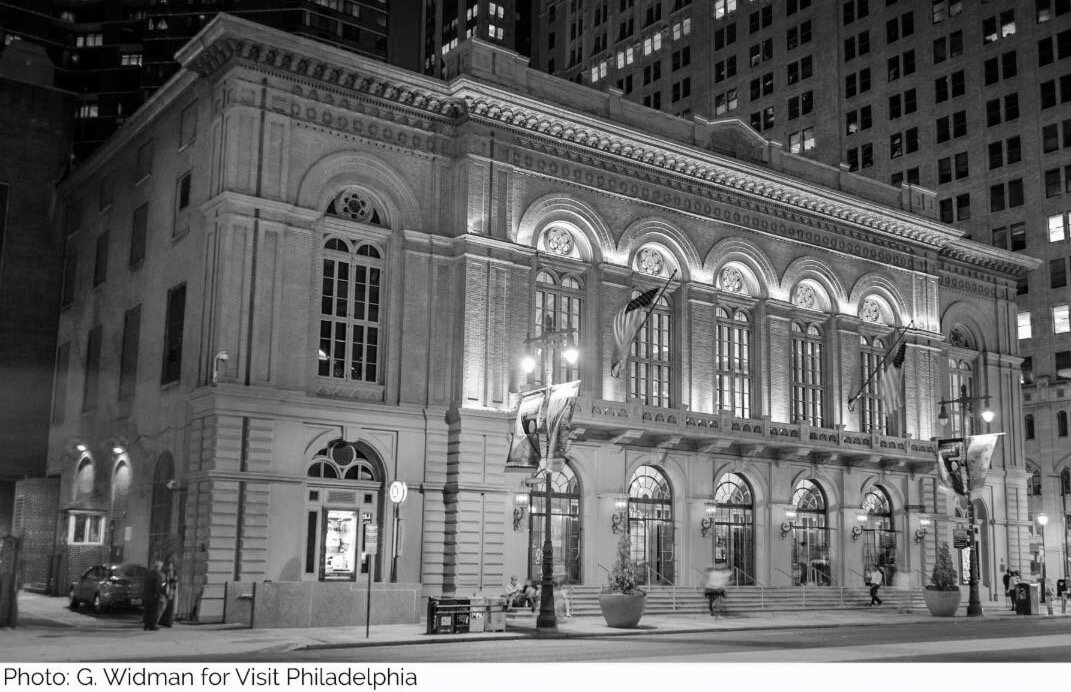
Frances Wister served as Director of the Orchestra and chairman of the Women’s Committees, from 1910 until her death in 1956.

During the depression, Frances raised funds to ensure the Orchestra remained among the world's best. She was beloved for her tireless work, travel and indomitable spirit.
The First Meeting
Frances Anne Wister called the first meeting of The Philadelphia Society for the Preservation of Landmarks on February 27, 1931, at the Society of Colonial Dames on Latimer Street. Her purpose was to rouse a group of committed supporters to save the Powel House from certain demolition.
In attendance were members of many of the old families of Philadelphia — well-known names such as Biddle, Barnes, Curtis, Lippincott, Cadwalader, Barnes, Drexel, Patterson and McIlhenny.
A board of directors was nominated and Frances Anne was immediately elected the first President of PhilaLandmarks, a position she held for the remaining 25 years of her life.
Determined to save this seminal house — “The place where Washington danced” — the group raised the money to purchase the house and the property next door for $30,000 in May of 1931.
The purchase was financed with seventy five donations and dues from eighty four members, including funds from Colonial Dames and the Civic Club, along with a generous $10,000 gift from Mr. & Mrs. Cyrus H. K. Curtis.
Frances Wister and her group also persuaded the buyers who had previously purchased original parts of the house — including interior woodwork being stored at the Philadelphia Museum of Art — to return those items.
Through the depths of the Depression, these women raised enough funds to pay off the mortgage, secure the house, install a caretaker and begin the extensive restoration.
After more than seven years of meticulous work, the Powel House was officially opened as a museum on November 23, 1938.
“I naturally assumed that some prominent man would be found who would undertake this job. And nobody was more surprised then myself when the Committee invited me to be that prominent man.”
— Frances Anne Wister
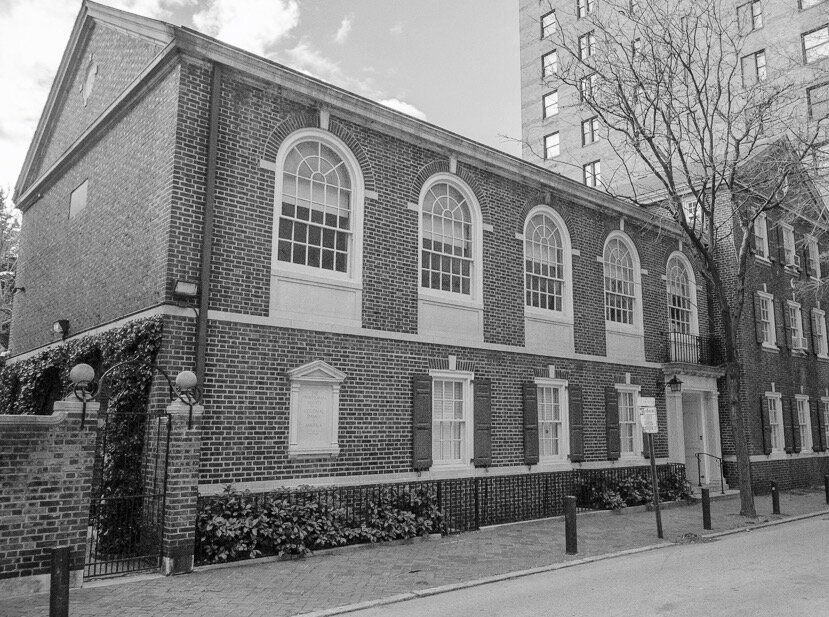
The first meeting of PhilaLandmarks was held at the Pennsylvania Chapter of the National Society of Colonial Dames of America on Latimer Street.

Kate Stanwood Cutter Pillsbury Curtis was among the women from laudable families who attended the first meeting of PhilaLandmarks. She and her husband Cyrus made the largest donation.

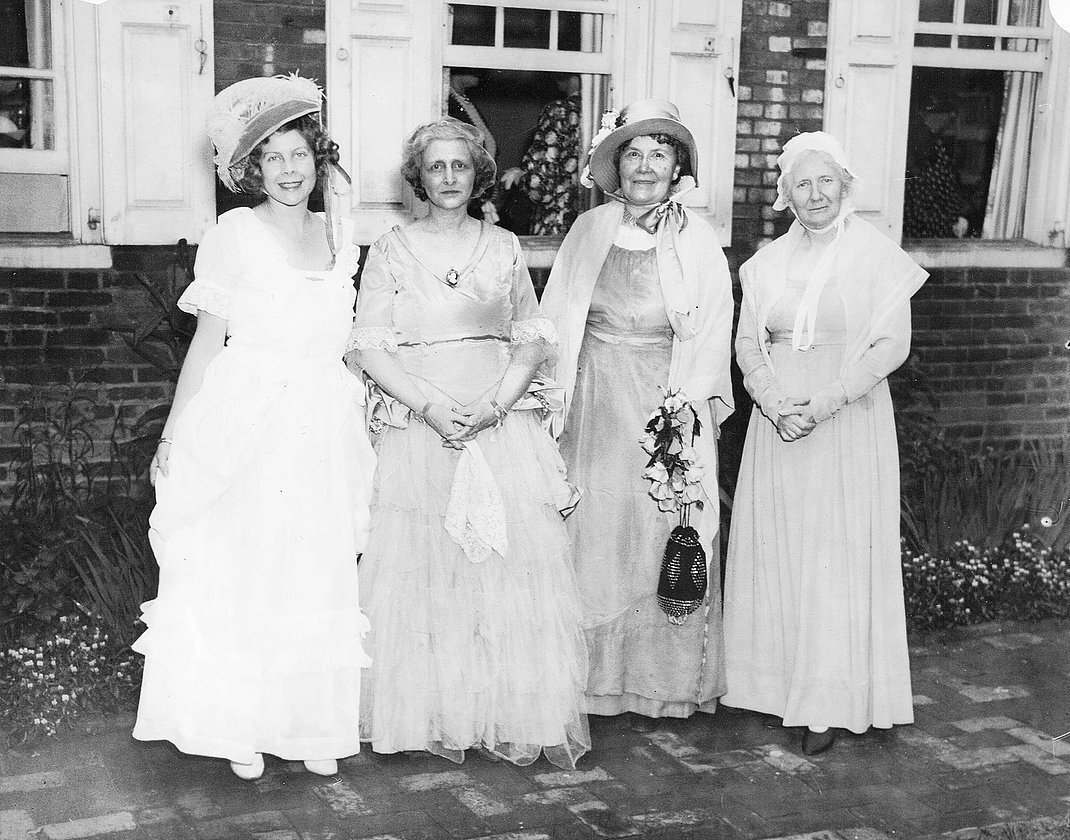
Frances Wister and other original PhilaLandmarks members at the first Powel House Garden Party.

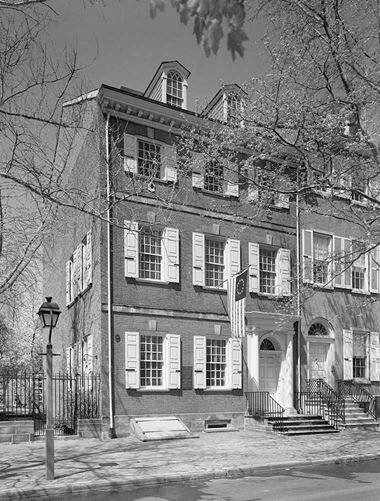
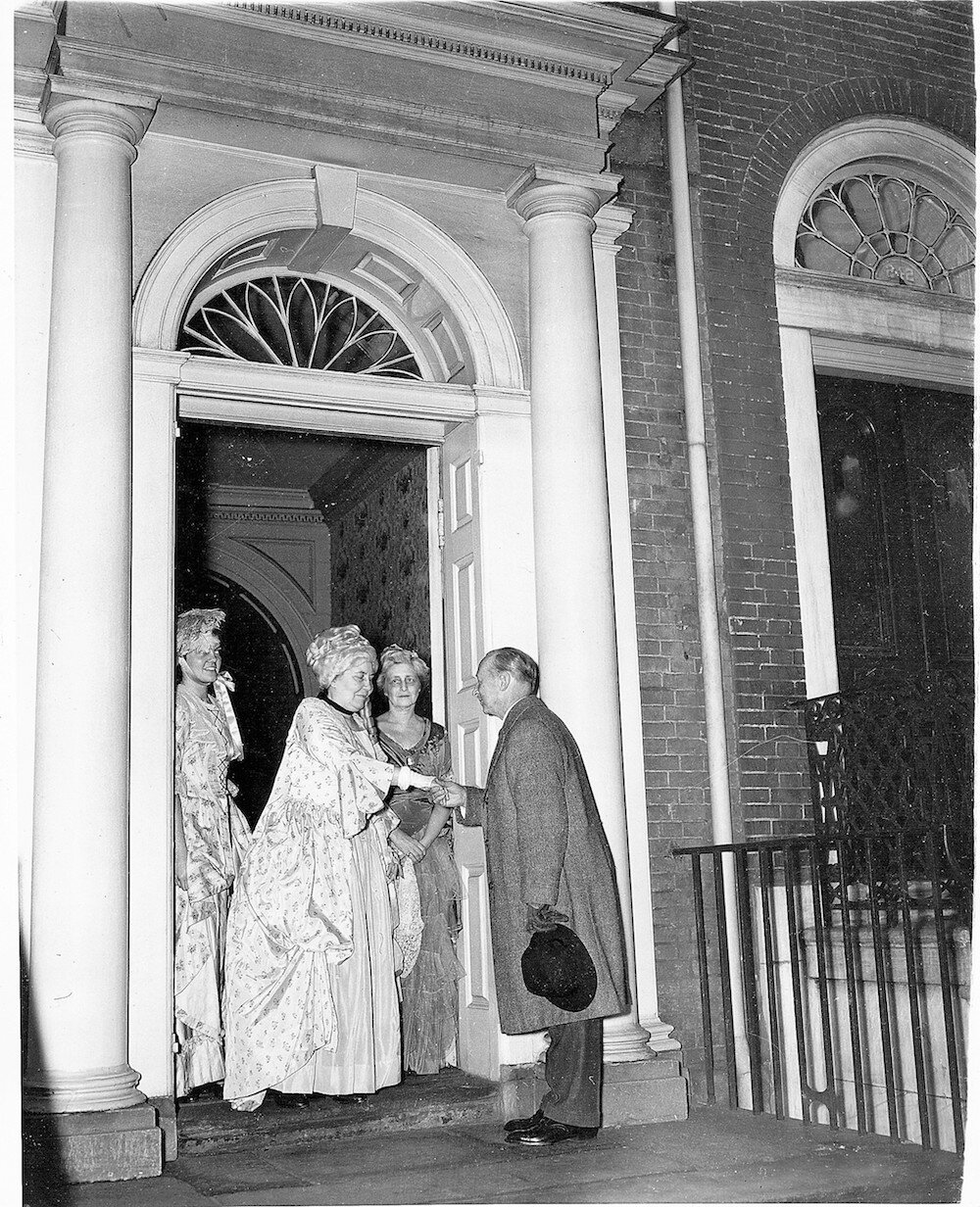
Frances Wister greets Atwater Kent, speaker at the opening night gala for the newly restored House. Kent was a prominent radio manufacturer and renowned philanthropist.
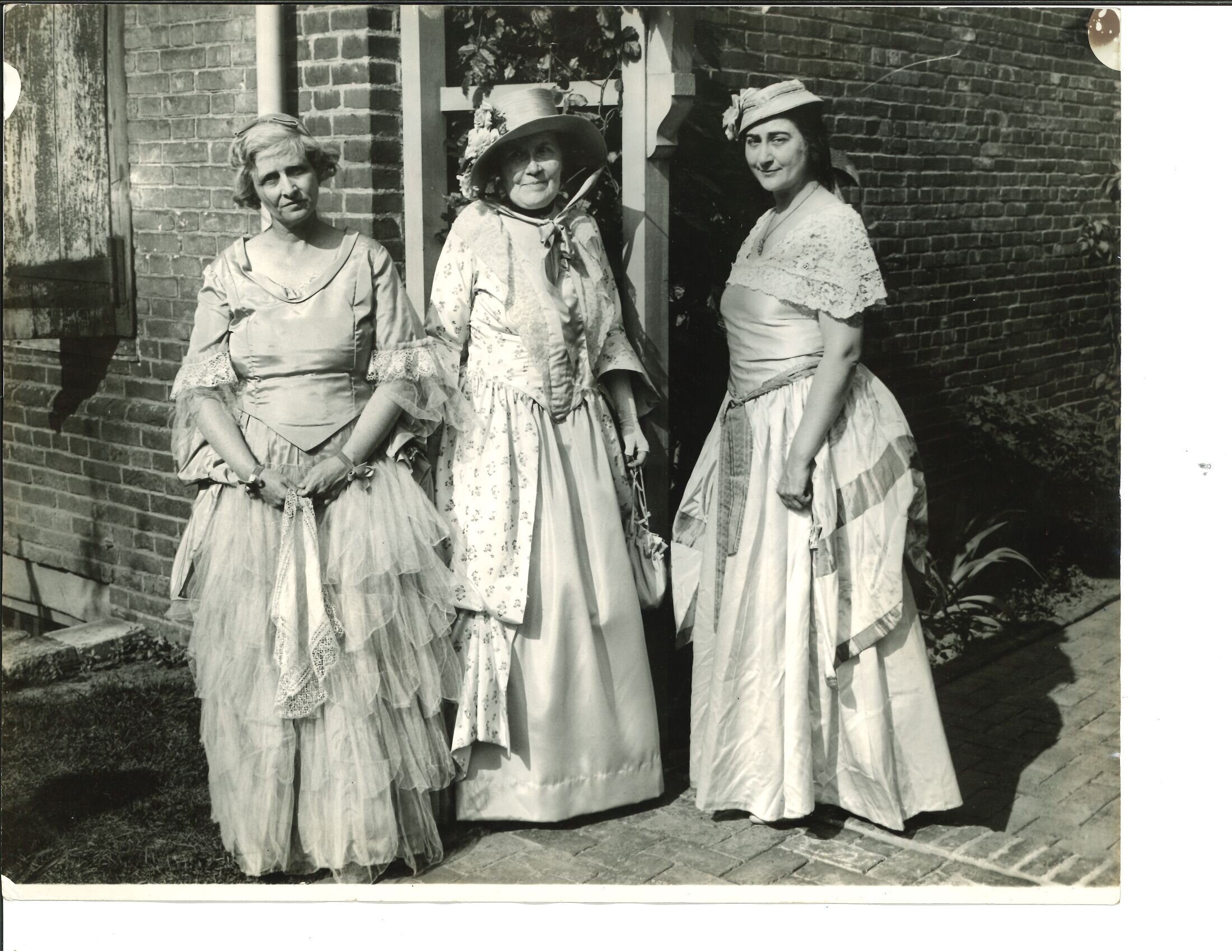
Frances Anne at an early Powel Garden Party. PhilaLandmarks archives.
The Next Decade, 1931-1941
Frances Wister would continue on as the President of PhilaLandmarks for the next 10 years. In that time, PhilaLandmarks became a noted pioneer preservation organization.
We have been instrumental in preserving many historic buildings including the Second Bank of the United States and the Old Franklin Institute built in 1824, which was most recently the Philadelphia History (Atwater Kent) Museum.
In 1934, PhilaLandmarks created a special committee to finance and preserve the United States Custom House on Chestnut Street, originally the Second Bank of the United States, and the first of many American buildings to copy the design of the Parthenon.
PhilaLandmarks additionally purchased 126 Cherry Street at the foot of Elfreth's Alley and established Elfreth's Alley Day encouraging neighbors to band together with the general public to actively engage in the preservation of the street.
PhilaLandmarks also helped create parks and walking malls around Independence Hall and Carpenter’s Hall. Frances Wister herself coined the term Society Hill to draw attention to this at risk neighborhood and its remarkable colonial and Federal buildings.
In 1938 PhilaLandmarks lobbied the State Housing Authority to "not demolish architectural treasures of historic importance" and that any"new building erected in sections where old buildings still stand should be harmonious in design with the historic buildings."

1932, Flag Day at the newly restored Powel House

1932, PhilaLandmarks members gather for Flag Day at the Powel House
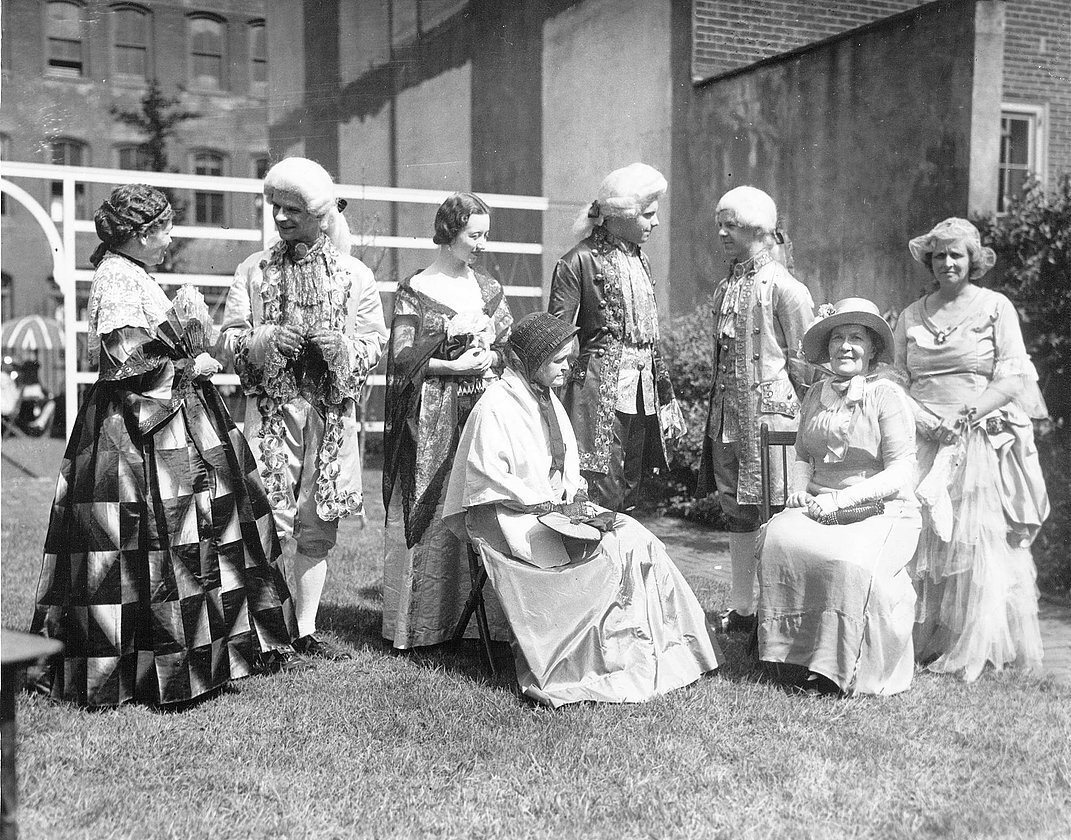
Powel Garden Party.
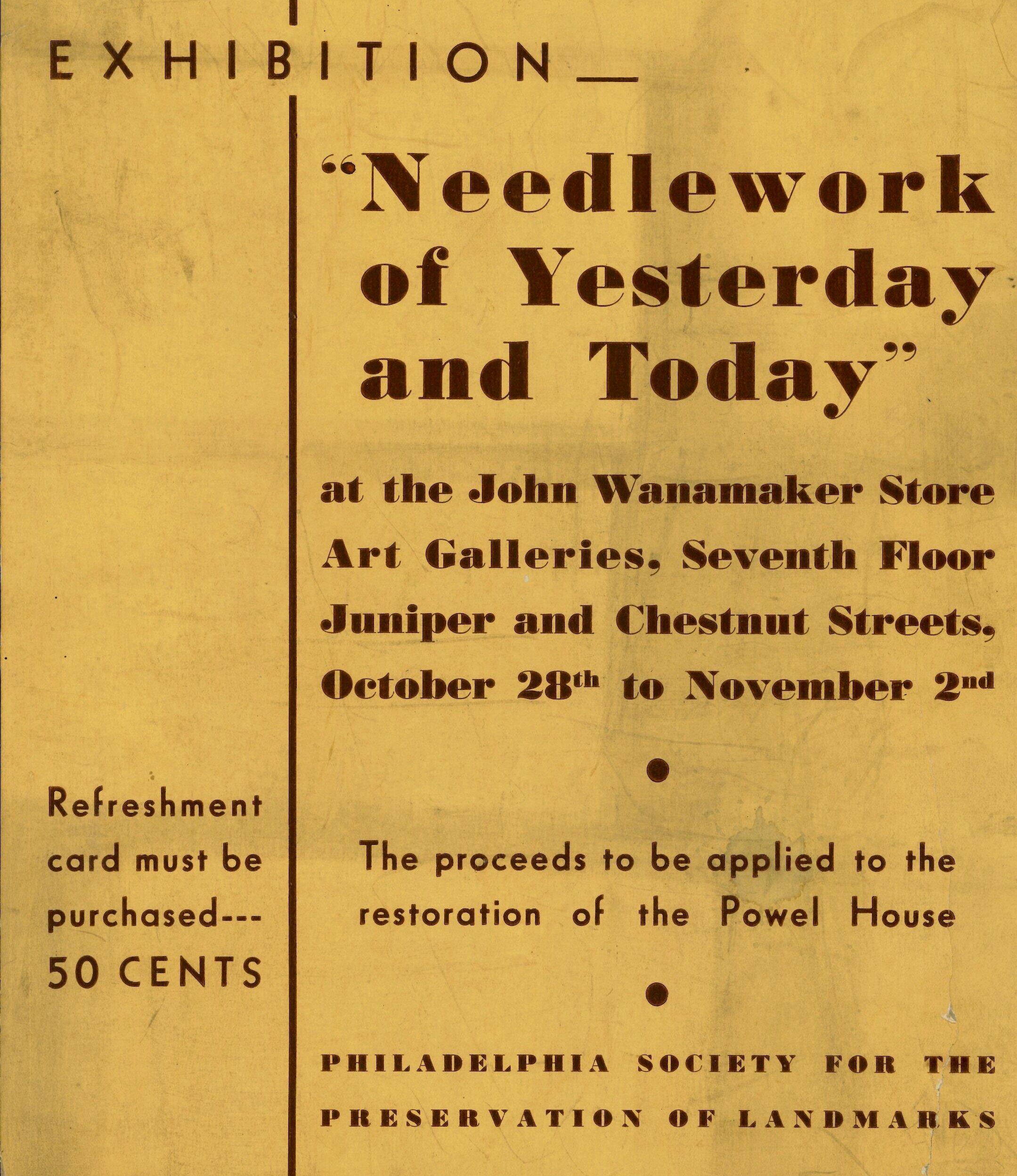
Early Needlepoint fundraiser to support the Powel House restoration.
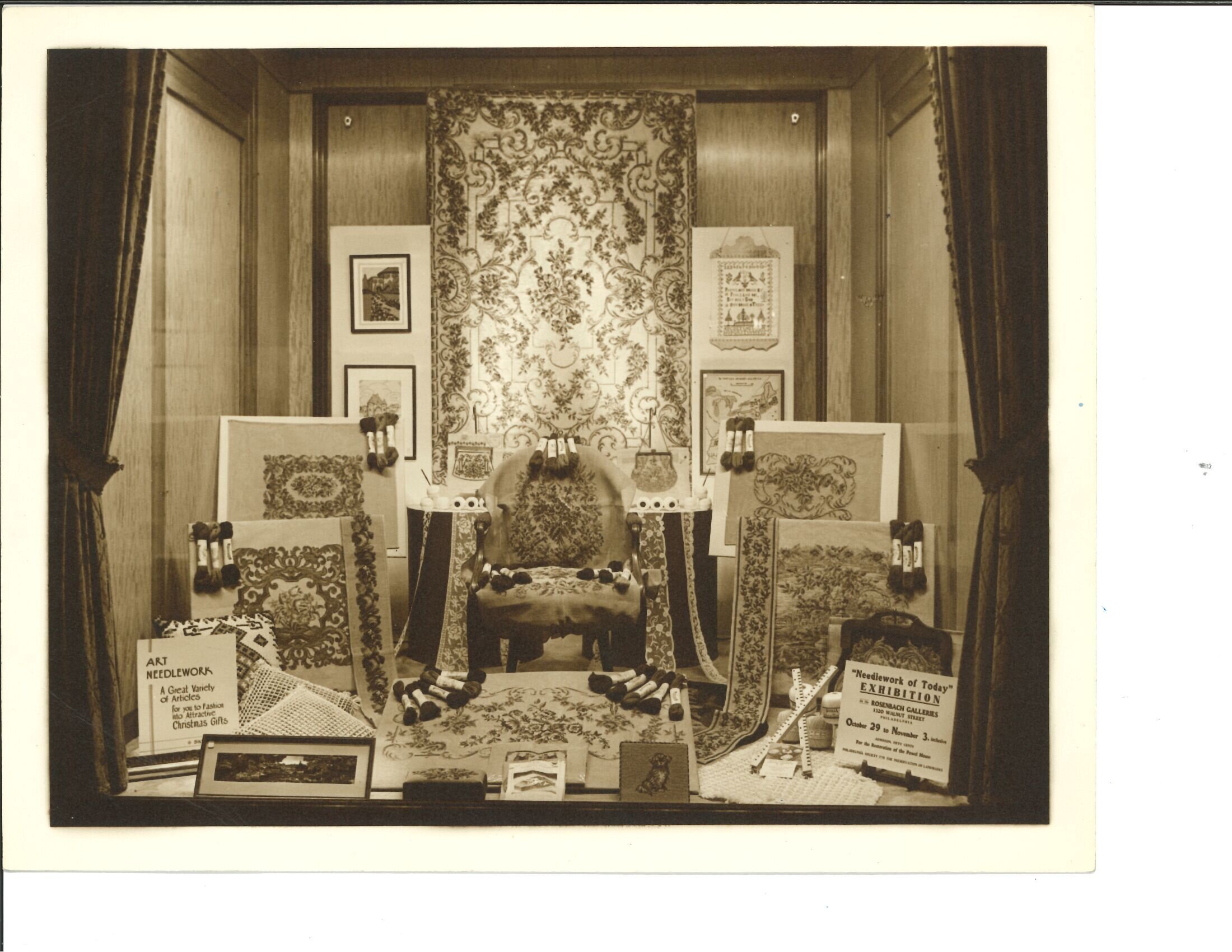
Early Needlepoint fundraiser to support the Powel House restoration.

Early Needlepoint fundraiser to support the Powel House restoration.

Early Needlepoint fundraiser to support the Powel House restoration.
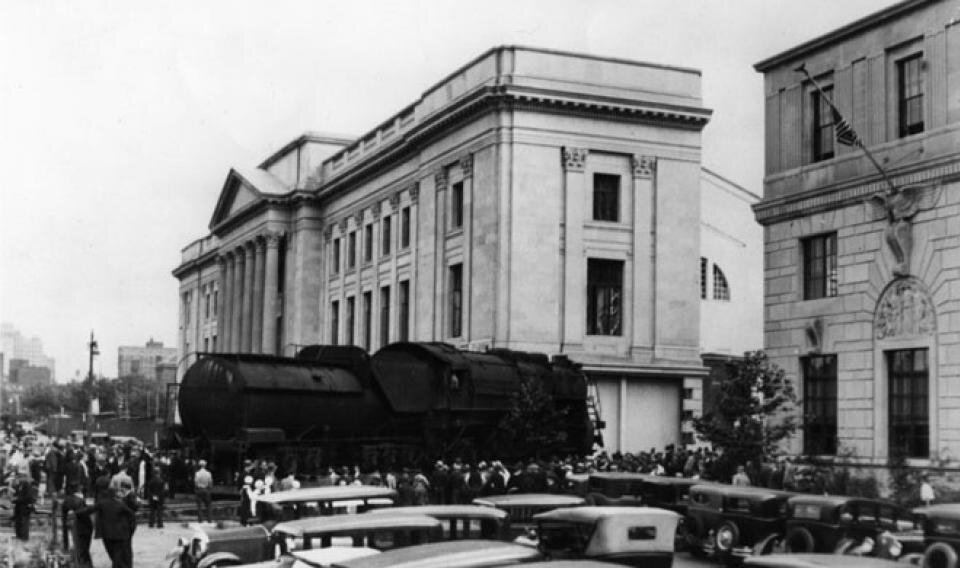
Frances Wister also helped save the Old Franklin Institute by convincing her friend Atwater Kent, who had recently bought the Betsy Ross House, to purchase the 1824 historic John Haviland-designed building, which was being threatened with demolition.
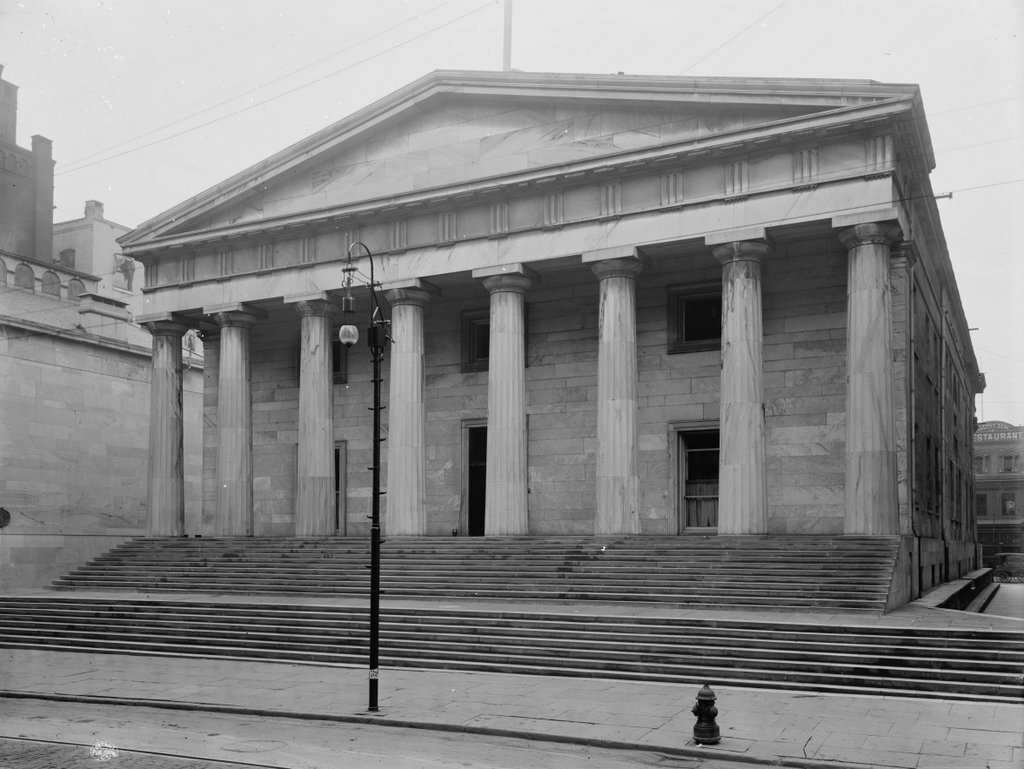
Frances Wister also a key force in raising funds to preserve the former Second Bank of the US designed by William Strickland and constructed between 1819 - 1824. Image courtesy of the Library of Congress.

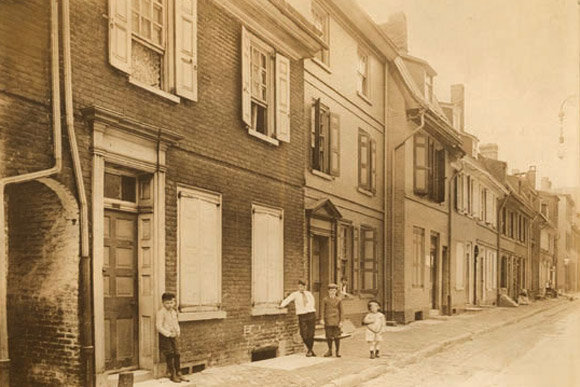

Early Needlepoint fundraiser to support the Powel House restoration.
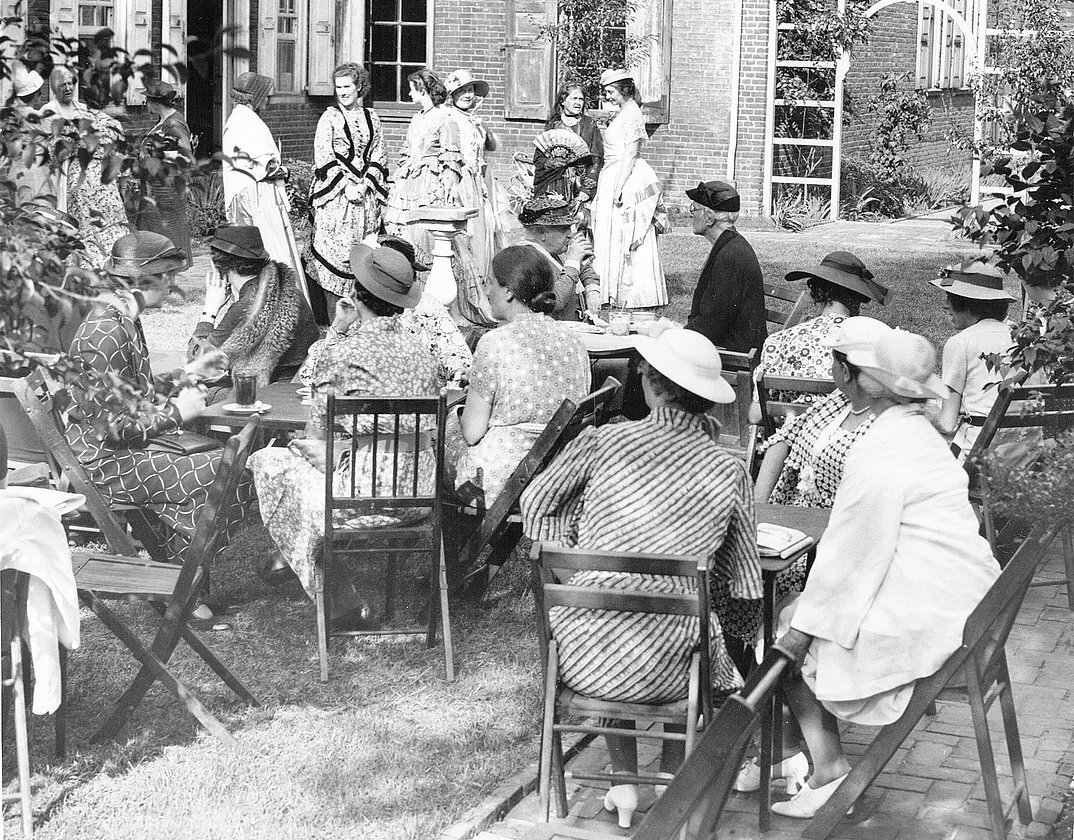
Powel Garden Party.

Tea at the Powel House.

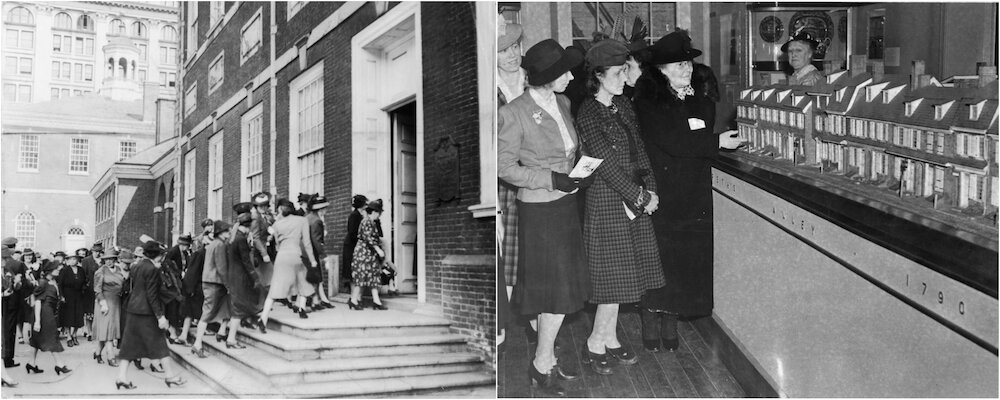
Frances Wister leading sightseers into Independence Hall (1940). At right, she presents her vision of Elfreth’s Alley. | Image courtesy of Temple University.
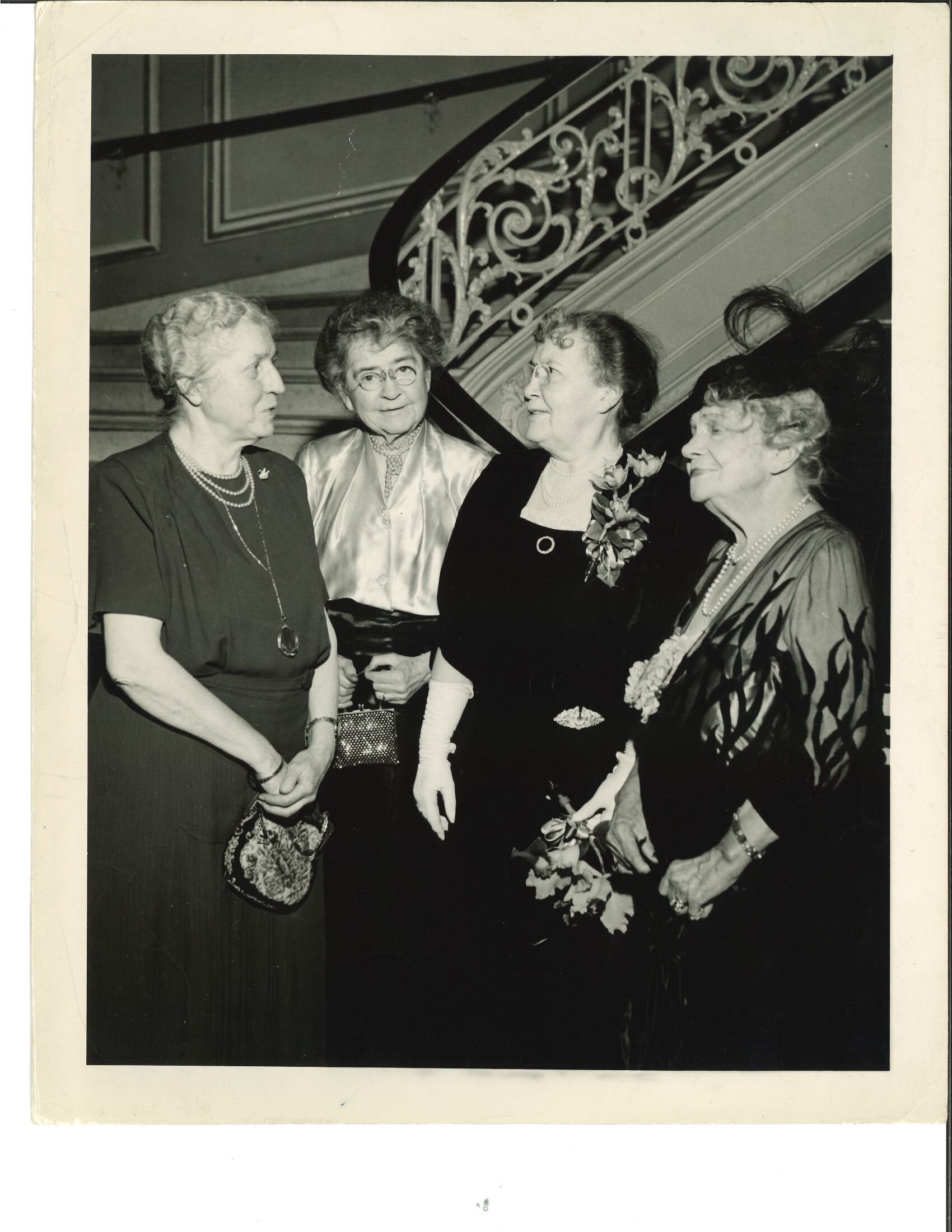
Frances Anne at the Academy of Music.
“Visiting old places is all but a mania with Frances. Her days are spent in hard toil, from early morning to midnight. I think she is the strongest woman ever born!"
— Ella Wister Haines. Frances’ sister
Three More Historic Houses
In 1940, PhilaLandmarks took title of Frances Wister's ancestral family home, Grumblethorpe in Germantown, which had been owned by an independent group of 35 Wister heirs. Again she used her same successful approach of rallying the wealthy elite to contribute funds to purchase this 1744 House whose history included a role in the American Revolution.
From 1956 to 1967, PhilaLandmarks raised funds and executed a major restoration of the property, positioning Grumblethorpe to become a museum focused on 18th-Century Germantown history.
Soon after, PhilaLandmarks was approached by Ambassador and Mrs. Walter H. Annenberg about a third house located a few blocks from the Powel House in the now revitalized "Society Hill" neighborhood. Once owned by Frances Wister’s cousin, Elsie Wister Keith, and earlier by the Hills and Physicks, it was the sole-surviving freestanding Federal townhouse in the area.
With major support from the Annebergs, Physick descendants, and prominent neighbors, the property was purchased and completely restored to the American Neoclassical style of its last famous resident, Dr. Philip Syng Physick. The house opened as a museum in 1965.
With three houses under its management, PhilaLandmarks’ origins story was not yet complete. In 1980, Easttown Township in Chester County purchased the farm estate of General Anthony Wayne with help from the National Trust for Historic Preservation and the Pennsylvania Historical and Museum Commission.
In 1981, Easttown Township and the National Trust for Historic Preservation were looking for a partner to operate and preserve the newly acquired house museum, Historic Waynesborough, a beautiful 18th century rural estate linked to America’s Revolutionary War history. They asked PhilaLandmarks to join forces with them. PhilaLandmarks agreed at once and our successful 43-year partnership happily began.
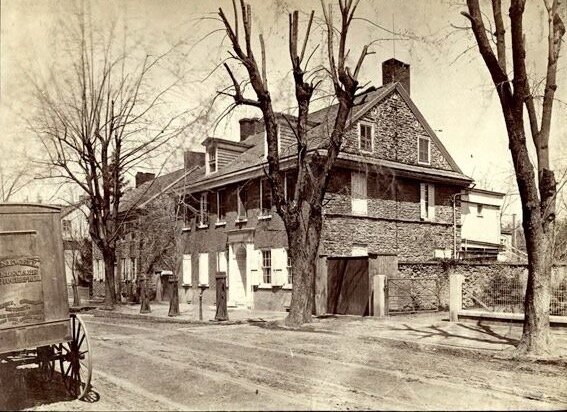

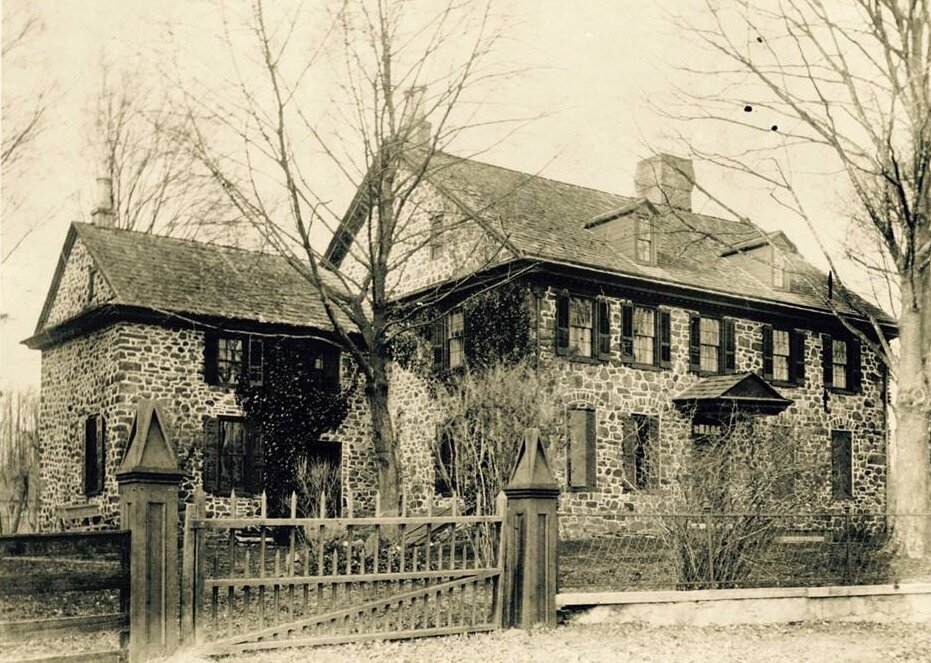
1990 - Present
Over the last several decades, PhilaLandmarks has continued its mission to preserve and maintain our historic sites, provide historical and cultural programming and education and engage a diverse public and our many audiences.
Some of our achievements over the last three decades include establishing the first full-time Executive Director for PhilaLandmarks; commemorating the 1789 election of Mayor Samuel Powel as the first mayor under our new republic, and honoring 300 years of mayors past and present along with descendants of Samuel Powel; establishing the Grumblethorpe Youth Volunteer and Grumblethorpe Elementary Education programs; creating our Road Scholar partnership in 1992; greatly enhancing our cultural offerings; and introducing new events and partnerships with area institutions.
In addition, we implemented the 1994 Grumblethorpe Endowment funded by a Wister descendant and the 1995 Hill-Physick Endowment. In 2015 we celebrated the Powel House’s 250th birthday with an event featuring ABC News journalist Cokie Roberts and her book, Founding Mothers, which included a chapter on Elizabeth Powel.
Our most significant Awards during this period included the 2018 Preservation Pennsylvania Award for Initiative in Stewardship for the Hill-Physick Roof Project and the 2019 Board of Directors Award for Outstanding Stewardship of Historic Properties from the Preservation Alliance.
There have been significant capital improvement projects at our four properties in this recent era — new roofs and restoration of deteriorated exterior elements at both Powel House and Hill-Physick House; restoration of the Waynesborough Carriage House; restoration of numerous interior spaces at all four houses; and enhancements of the gardens and grounds at Grumblethorpe, including repointing exterior walls, replacing fences, re-soiling and planting of new ornamental beds.
We have also executed an extensive number of infrastructure projects at all four houses — replacing plumbing and drainage systems; upgrading electrical and security systems; creating a new database system; enhancing our financial analytics and reporting systems; and raising the quality of our communications and outreach, including developing our social media presence.
Our most recent communications accomplishment includes this new state-of-the-art website which provides information on all aspects of PhilaLandmarks together with higher resolution imaging to effectively showcase our houses, histories and people, our programs and events, and provide opportunities for all to join and support us and gather together in celebration of history. Our goal with our new website and all our efforts is as always to inspire and deepen our communications with our cherished and diverse audiences.
